Entryways set the tone for your home, and choosing the right tile can balance style, durability, and the illusion of spaciousness—especially in compact foyers. From wood-look porcelain that mimics warm hardwood to graphic cement or penny-round mosaics that introduce texture and personality, the right pattern and material can make a small space feel larger and more inviting. High-contrast schemes like black-and-white checkerboard or contrasting grout with crisp subway tiles add visual depth, while geometric hexagons arranged in multicolored transitions draw the eye and lend a contemporary edge. Natural stone-look ceramics and earthy terracotta palettes infuse warmth, and occasional metallic or gloss finishes offer a subtle sheen. Whether you’re after timeless simplicity or bold statement-making, these 20 small entryway tile floor ideas blend function with design flair, ensuring every guest’s first impression is a stylish one.
1. Porcelain Wood-Look Tiles
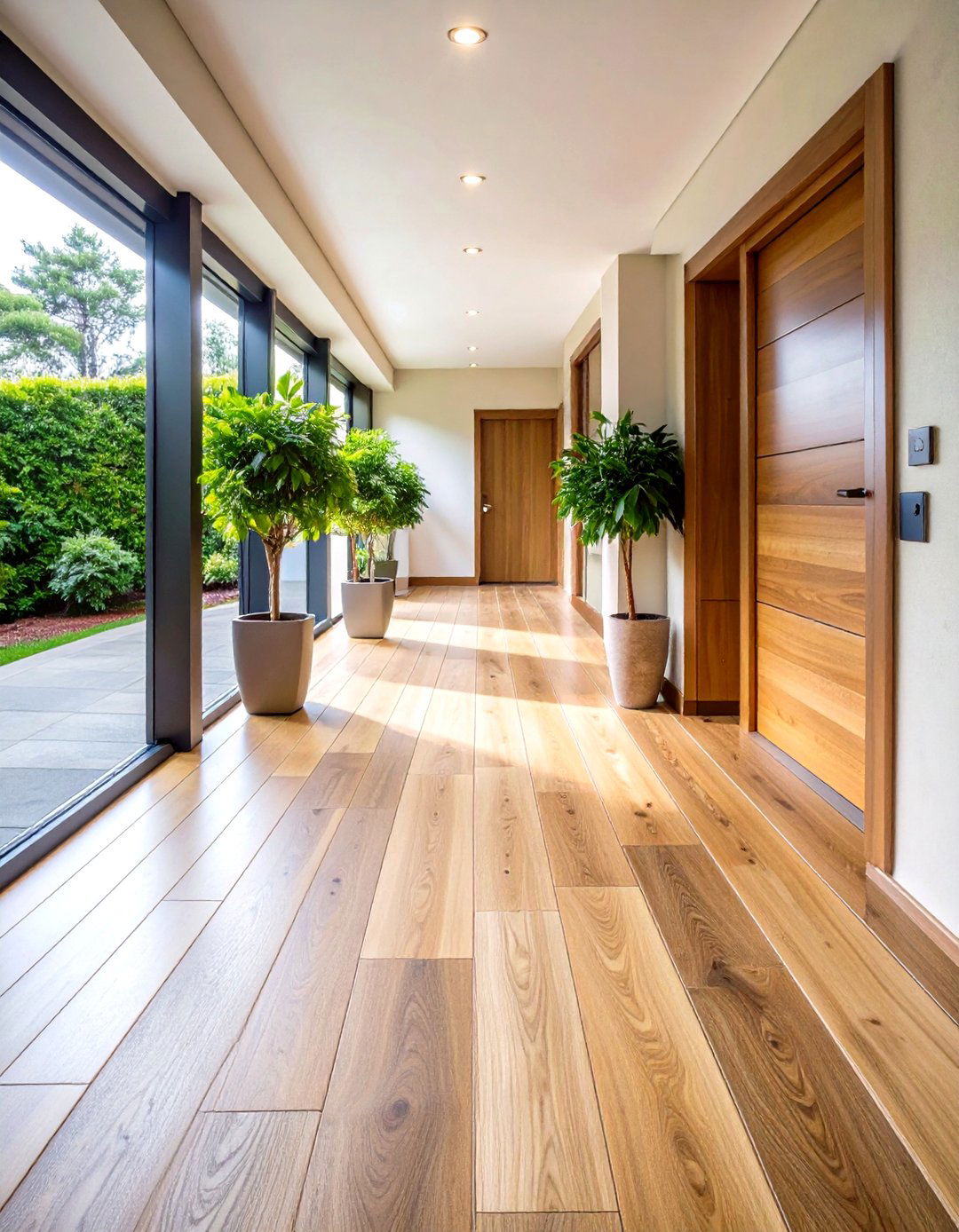
Porcelain wood-look tiles mimic the warmth and grain of hardwood while delivering water resistance and easy maintenance—perfect for busy entryways where moisture and dirt are inevitable. Their elongated plank shape visually elongates narrow spaces, guiding the eye inward and making the foyer appear deeper. Available in grain patterns from light oak to rich walnut, these tiles complement both traditional and modern decors, pairing seamlessly with neutral walls or contrasting accent rugs. Their porcelain composition withstands scratches, stains, and heavy foot traffic, offering the beauty of wood without the upkeep.
2. Geometric Hexagon Patterns
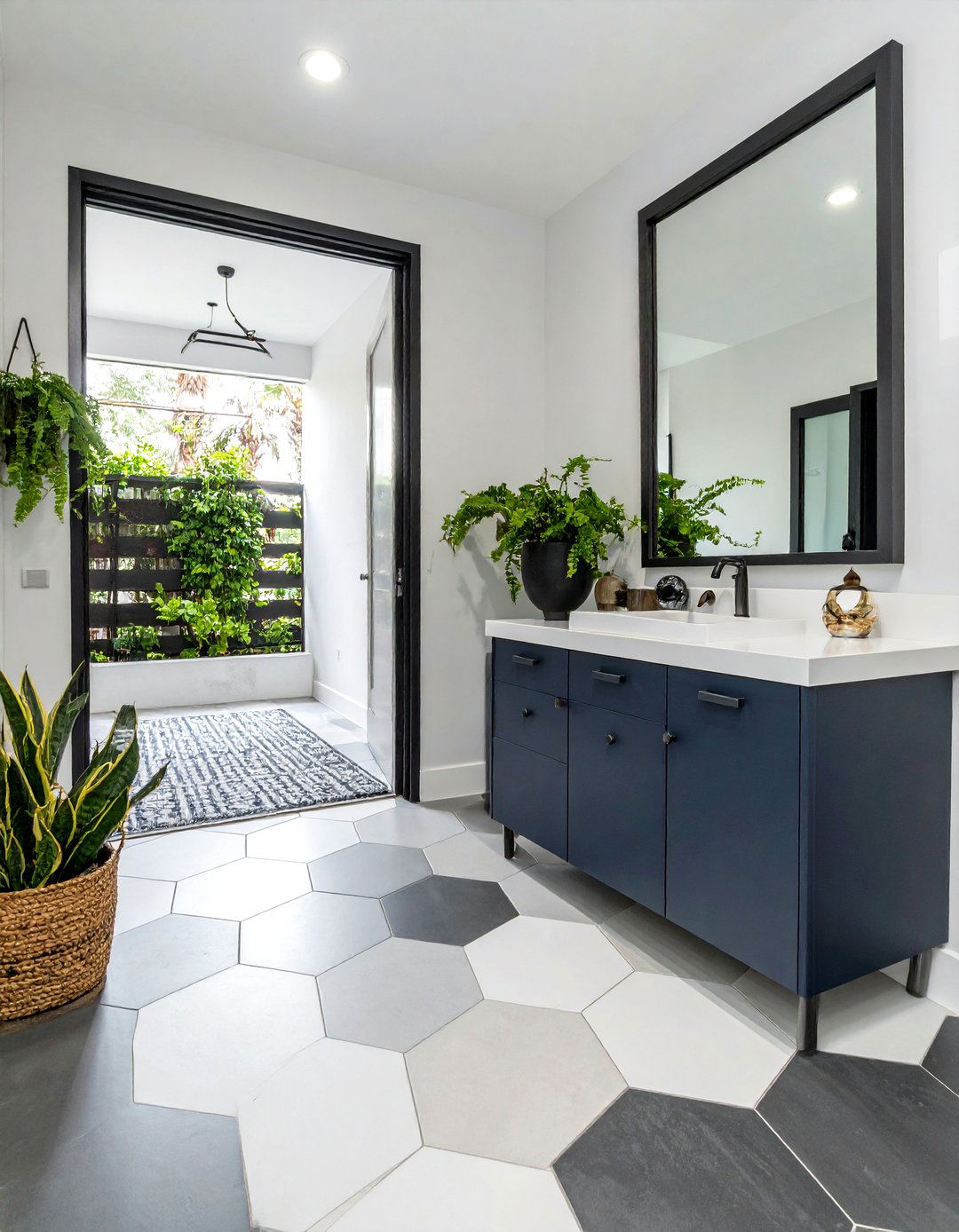
Hexagon tiles offer a contemporary twist on classic flooring, creating dynamic, honeycomb-like patterns that play with perspective and scale. By mixing different shades—such as charcoal, slate gray, and soft white—you can craft subtle gradients or bold contrasts that make a modest foyer feel expansive. The interlocking shapes draw the eye across the floor, enhancing the sense of movement and space. Porcelain versions provide durability, while matte finishes reduce slipperiness underfoot. For an extra layer of interest, consider alternating hexagon sizes or incorporating a border row in a complementary hue.
3. Bold Black-and-White Mosaic

Mosaic patterns in black and white deliver timeless elegance with a graphic punch, from intricate floral motifs to modern pixel-inspired layouts. Small marble or porcelain tesserae allow for custom designs—whether tightly arranged penny rounds in a swirling medallion or angular mosaic stripes. The high contrast not only injects personality but also camouflages dirt and wear. Pair your mosaic floor with minimalist decor to let the tile take center stage, or complement it with coordinating textiles in geometric prints. Proper sealing ensures that grout lines remain crisp and easy to clean.
4. Classic Checkerboard Flooring
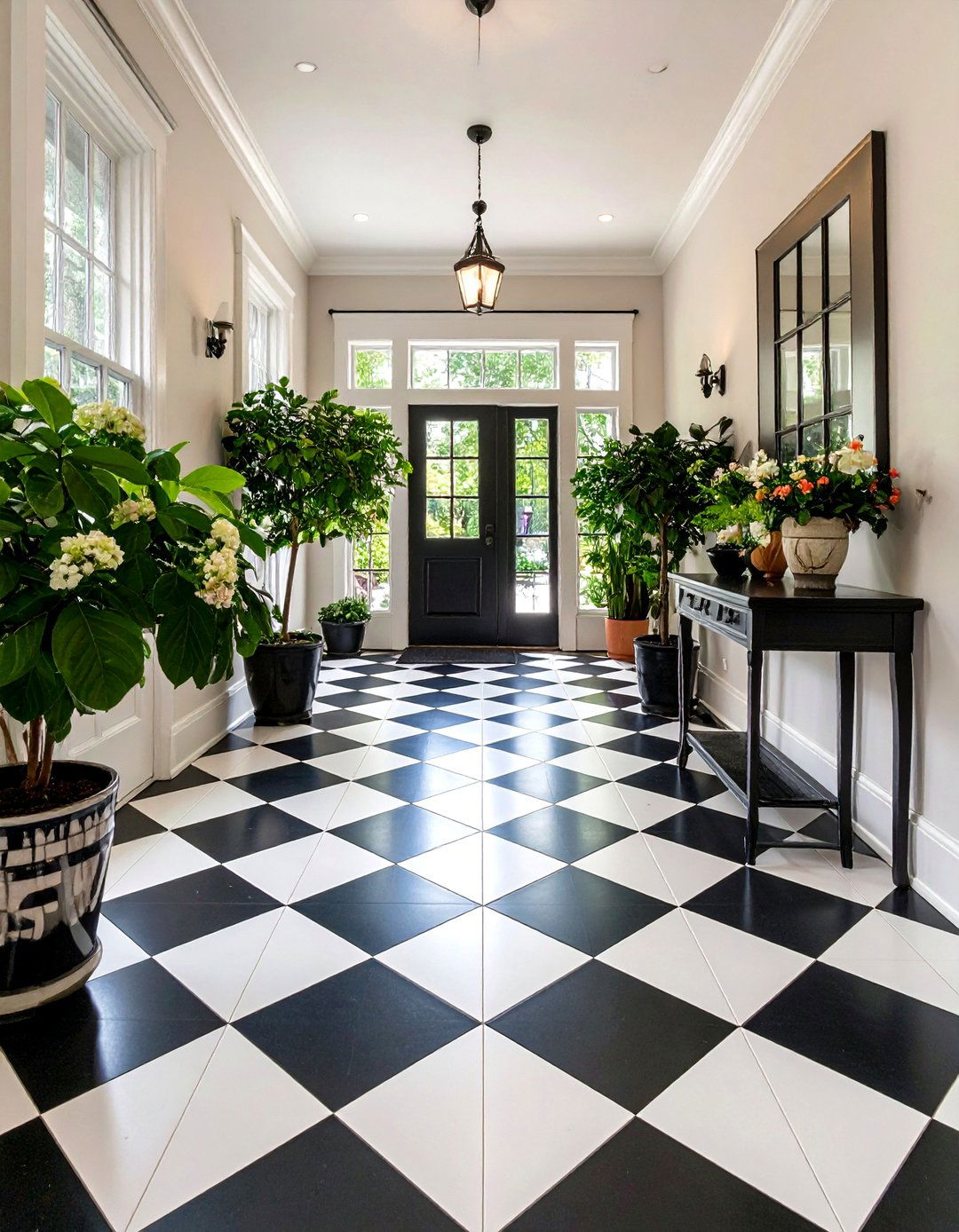
The classic checkerboard, alternating two contrasting colors—often black and white—anchors a small entryway in heritage charm. By laying tiles on the diagonal, you further optically widen narrow spaces, guiding sightlines toward the home’s interior. A durable porcelain or ceramic blend helps these high-contrast squares resist scuffs, while a matte or low-sheen finish reduces glare. To modernize the look, consider softer color combinations like navy and cream or charcoal and blush. Accent with simple molding and unadorned walls to avoid visual clutter, allowing the checkered floor to remain the focal point.
5. Moroccan-Inspired Cement Tiles

Bold patterns in hand-painted or printed cement tiles lend artisanal flair inspired by Moroccan zellige. These encaustic-style tiles showcase geometric motifs, starbursts, and florals in rich blues, ochres, and terracottas, instantly elevating a small foyer into a vibrant vignette. Their matte finish and slightly textured surface add tactile interest underfoot. While authentic cement demands sealing, porcelain reproductions offer low-maintenance alternatives. Cluster patterned tiles at the center and frame them with a neutral border to prevent overwhelming a compact space.
6. Penny Round Tiles
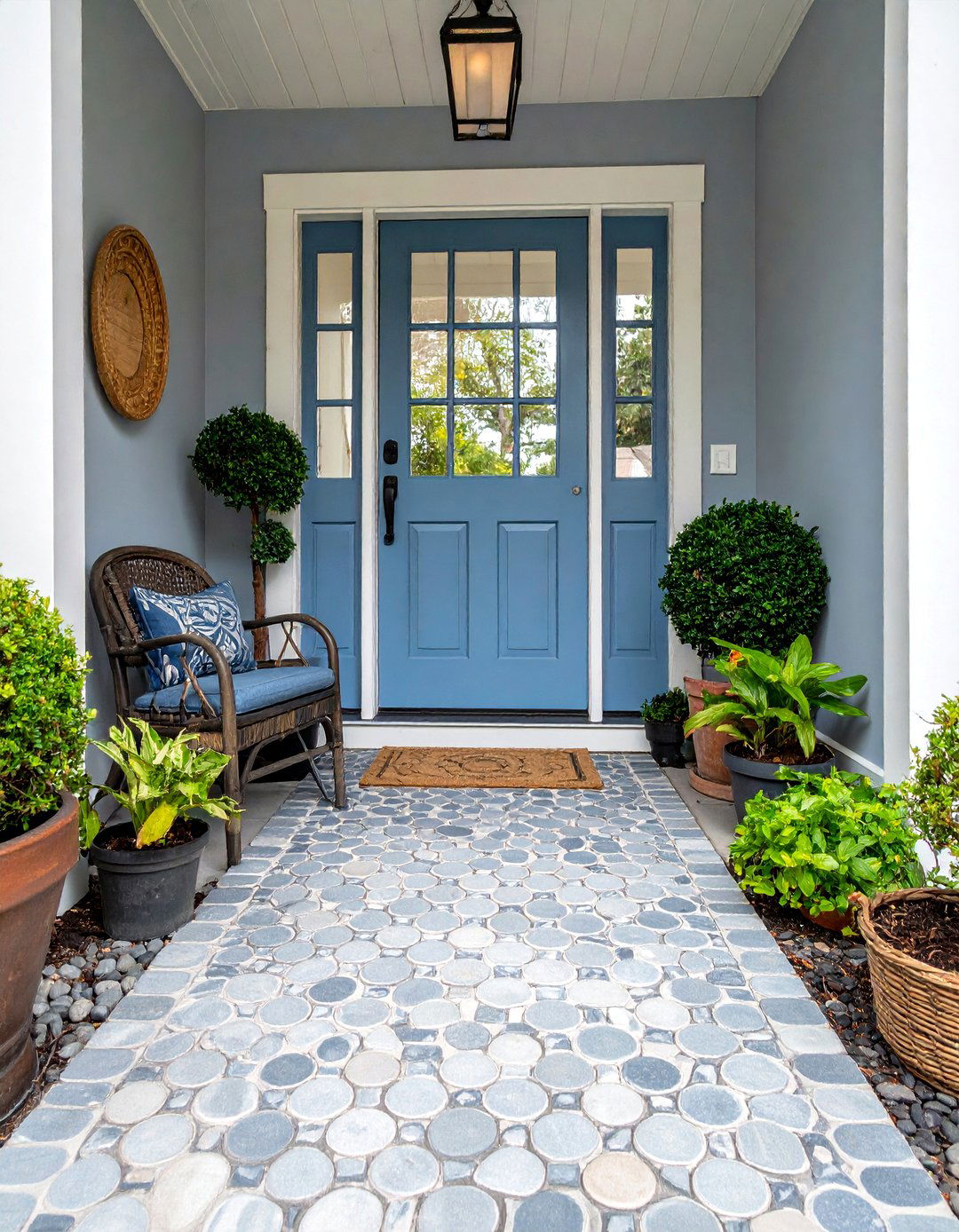
Penny round tiles—small, circular mosaics reminiscent of vintage coinage—create a soft, bubbly surface that brightens tiny entryways. Often glazed in gloss or matte finishes, they slip together for minimal grout lines, making spills easy to wipe up. Choose monochrome whites for a classic look, or alternate two coordinating hues—such as pale gray and slate—to craft subtle polka-dot effects. The small scale and curved edges interplay with natural or layered lighting, adding dimension. Their porcelain variants ensure durability without sacrificing charm.
7. Terrazzo-Style Pebble Tiles
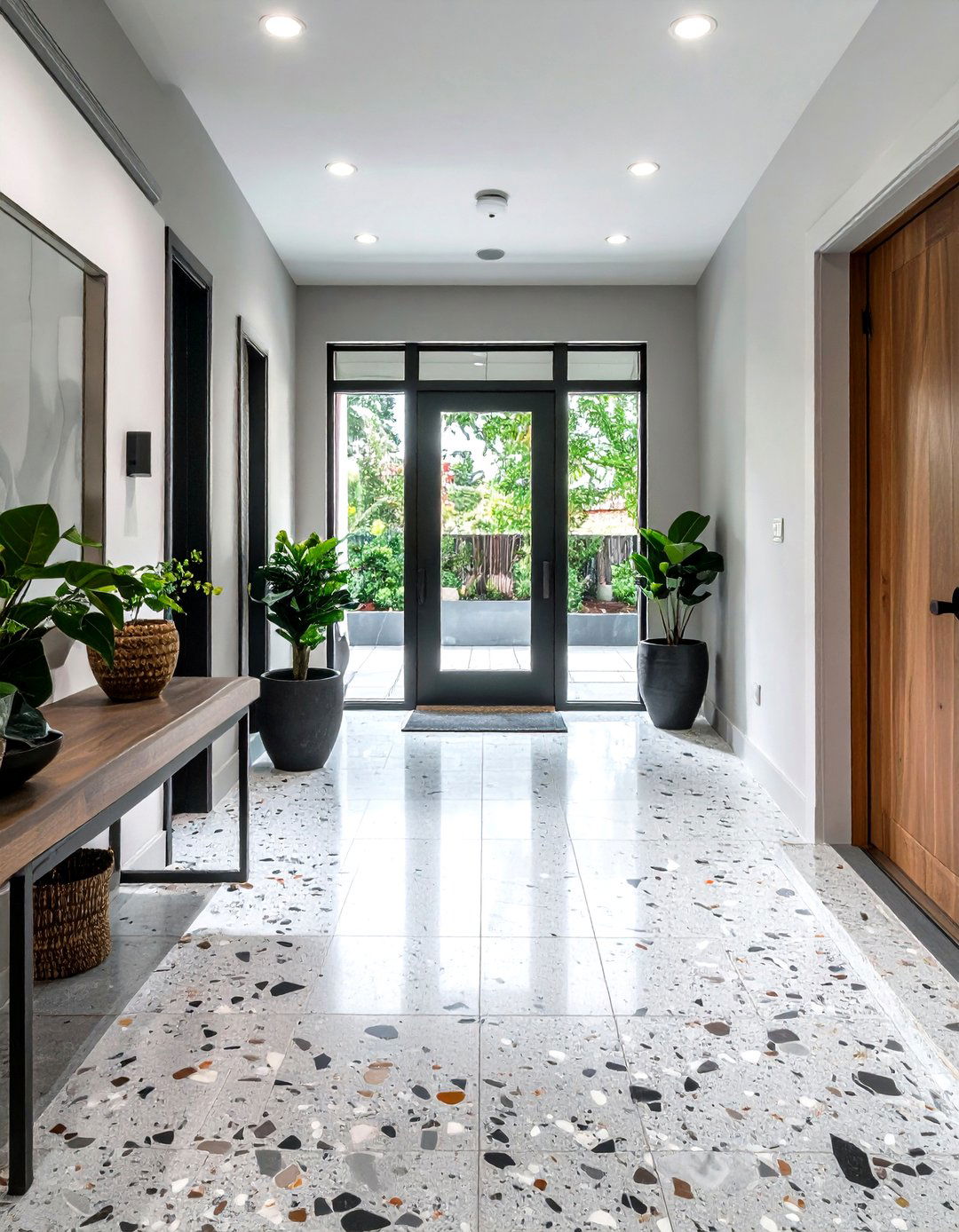
Terrazzo-inspired pebble or “speckle” floor tiles offer a low-key nod to mid-century modern design, scattering chips of marble, quartz, or glass within a neutral matrix. This subtly patterned surface conceals debris and adds understated texture. Available in porcelain and resin-bonded options, these tiles withstand heavy use and moisture. Light-toned bases with pale aggregate brighten small foyers, while darker mixes camouflage footprints. Their speckled finish blends seamlessly with metal accents—such as brass hardware or iron benches—lending a cohesive look.
8. Stone-Look Ceramic Tiles
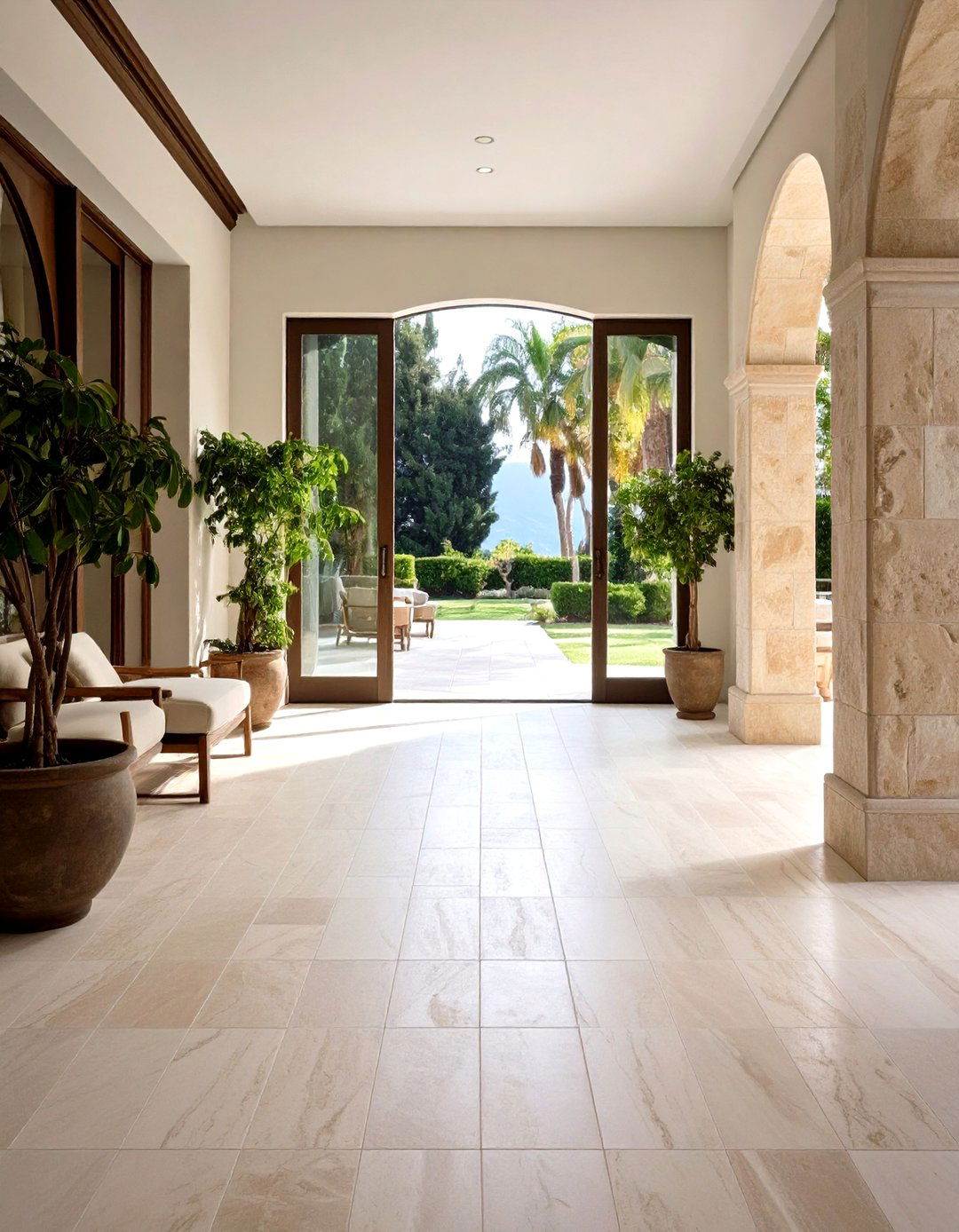
Ceramic or porcelain tiles that emulate natural stone—like travertine, slate, or limestone—bring timeless elegance to a compact entryway without the maintenance of real stone. Veining and tonal variations mimic authentic material, while the tile’s impervious surface resists water and abrasion. Neutral hues in gray, beige, or charcoal furnish a versatile backdrop for colorful rugs or artwork. Choose rectified edges for a uniform grid or tumbled edges for a rustic effect. In both cases, the result is a high-end look suited to both classic and contemporary interiors.
9. Earth-Toned Terracotta Tiles
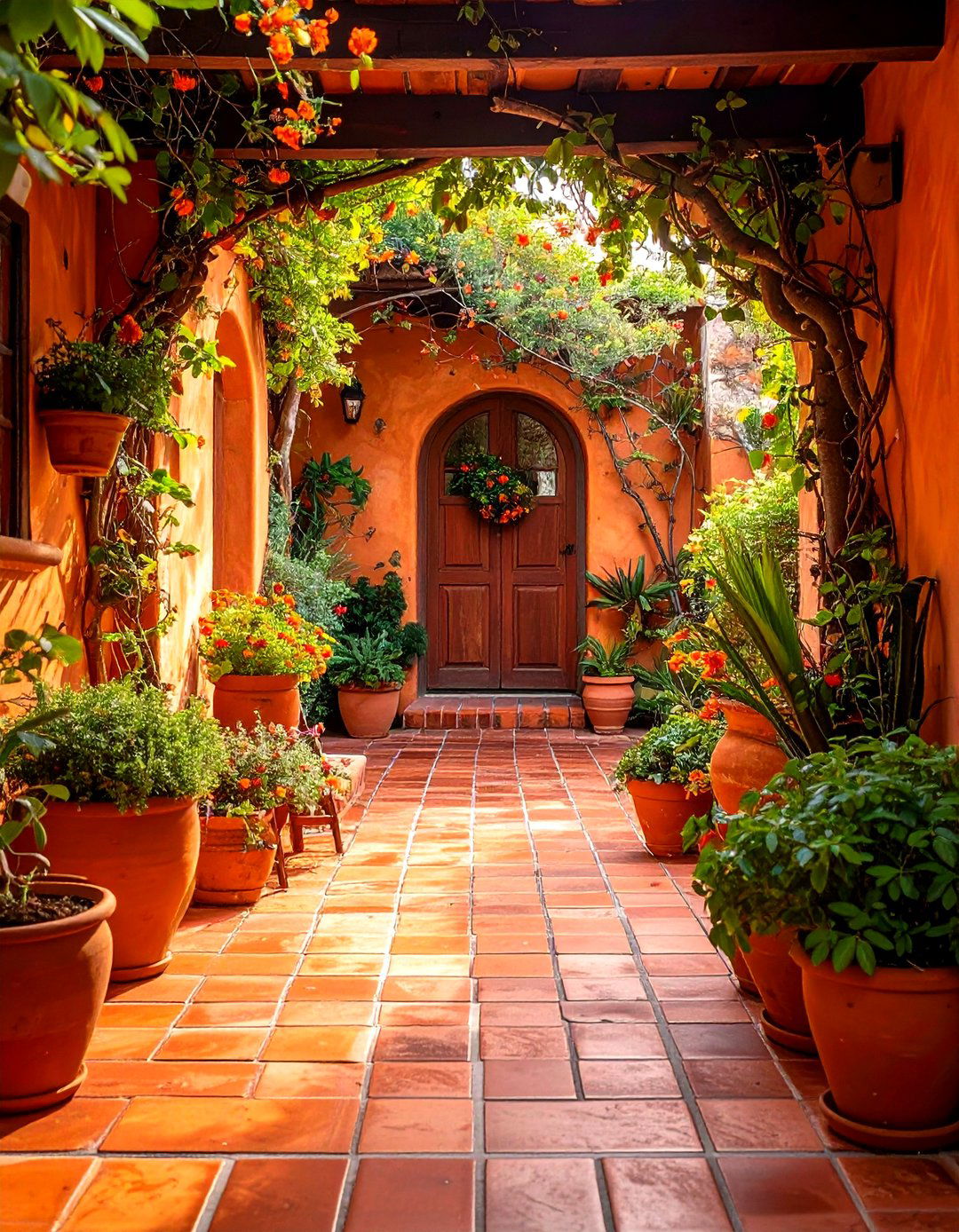
Warm terracotta hues evoke sun-baked Mediterranean courtyards, infusing small entryways with cozy earthiness. Unglazed clay tiles in rich russet and burnt orange develop a patina over time, amplifying character. Modern porcelain versions capture the hue while resisting moisture and staining. Pair with soft cream walls and woven runners for a welcoming, rustic ambiance. Their matte texture grounds a transitional or farmhouse-style foyer, while slip-resistant finishes ensure safety underfoot.
10. Crisp White Subway Tiles
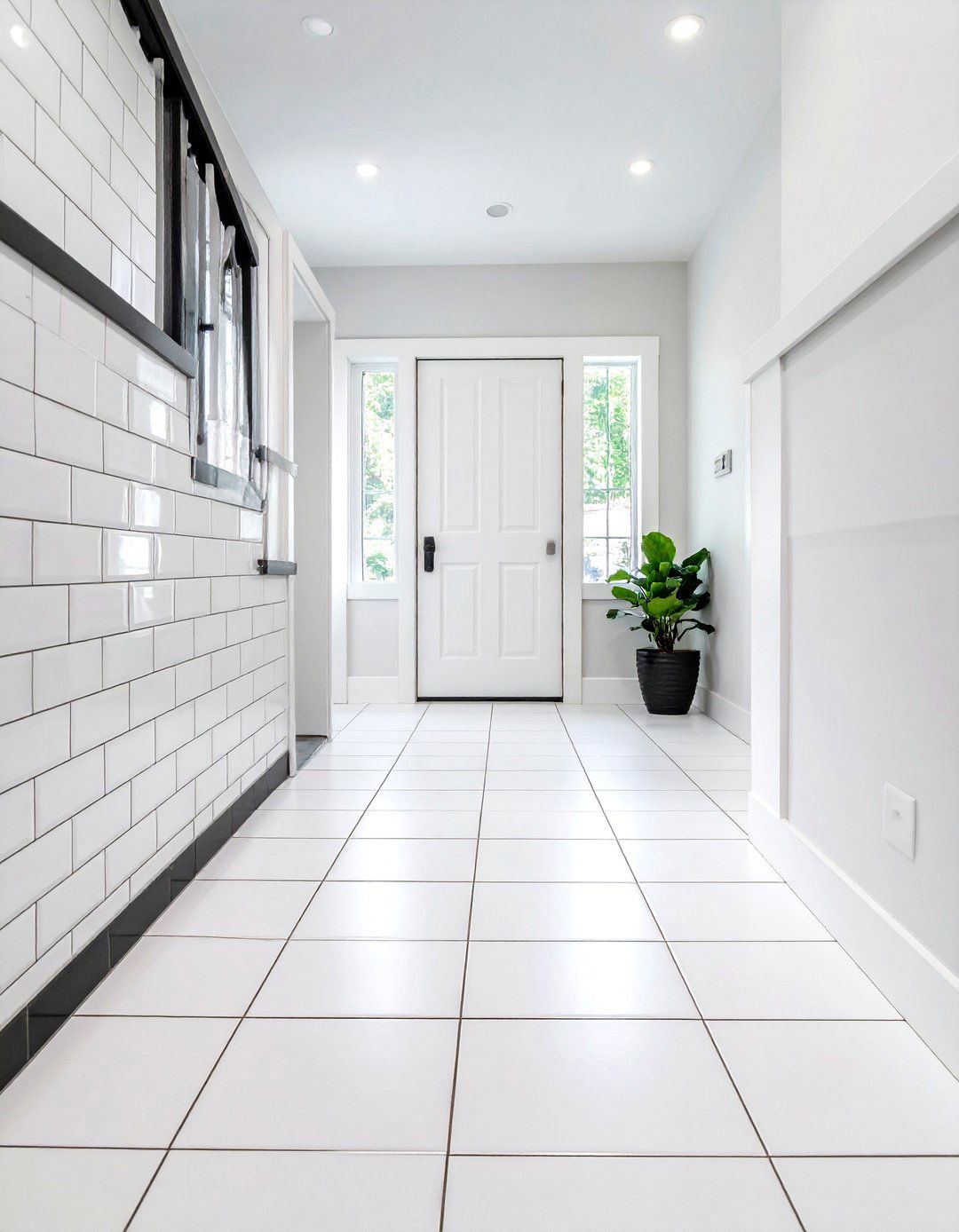
Subway tiles aren’t just for walls—laid flat and staggered on the floor, white subway tiles create a breeze-clean, elongated grid pattern ideal for tight entryways. The glossy finish reflects light, enhancing brightness, while contrasting grout (such as charcoal) emphasizes the graphic lines. This installation works especially well as a solo floor treatment or paired with a colored border for subtle contrast. Durable porcelain varieties withstand spills and dirt, making upkeep simple.
11. Matte Finish Bold Colors
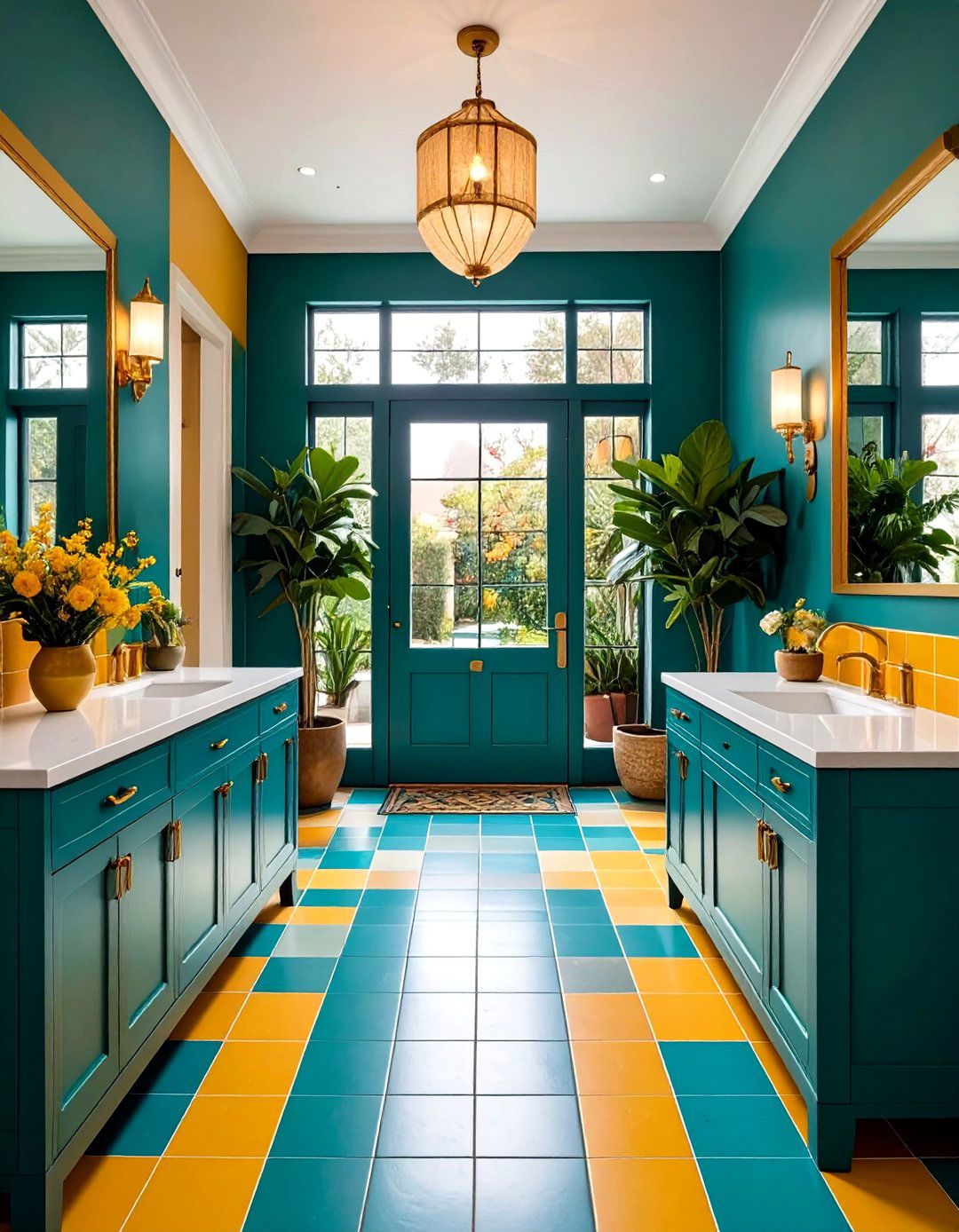
Transitioning from glossy to matte tile surfaces in vibrant shades like teal, mustard, or navy introduces color without glare. Matte glazes hide smudges and reduce slip potential—key features in moisture-prone entryways. A single bold hue commands attention, while tone-on-tone geometric layouts (such as chevrons or diamonds) maintain visual interest without overwhelming a small footprint. Pair with neutral walls and minimalist decor to showcase the tile’s rich color and texture.
12. Herringbone Pattern Tiles

The classic herringbone arrangement—short rectangular tiles laid in a zigzag pattern—draws the eye lengthwise, making narrow foyers appear longer. Whether you choose subway tiles, wood-look planks, or slim ceramic rectangles, the interlocking chevrons introduce energy and motion. Neutral tones ensure versatility, while high-contrast pairings (dark tile on pale grout) accentuate the pattern. Porcelain compositions guarantee resilience. Install a simple border around the herringbone field to anchor the design.
13. Large-Format Minimalist Tiles
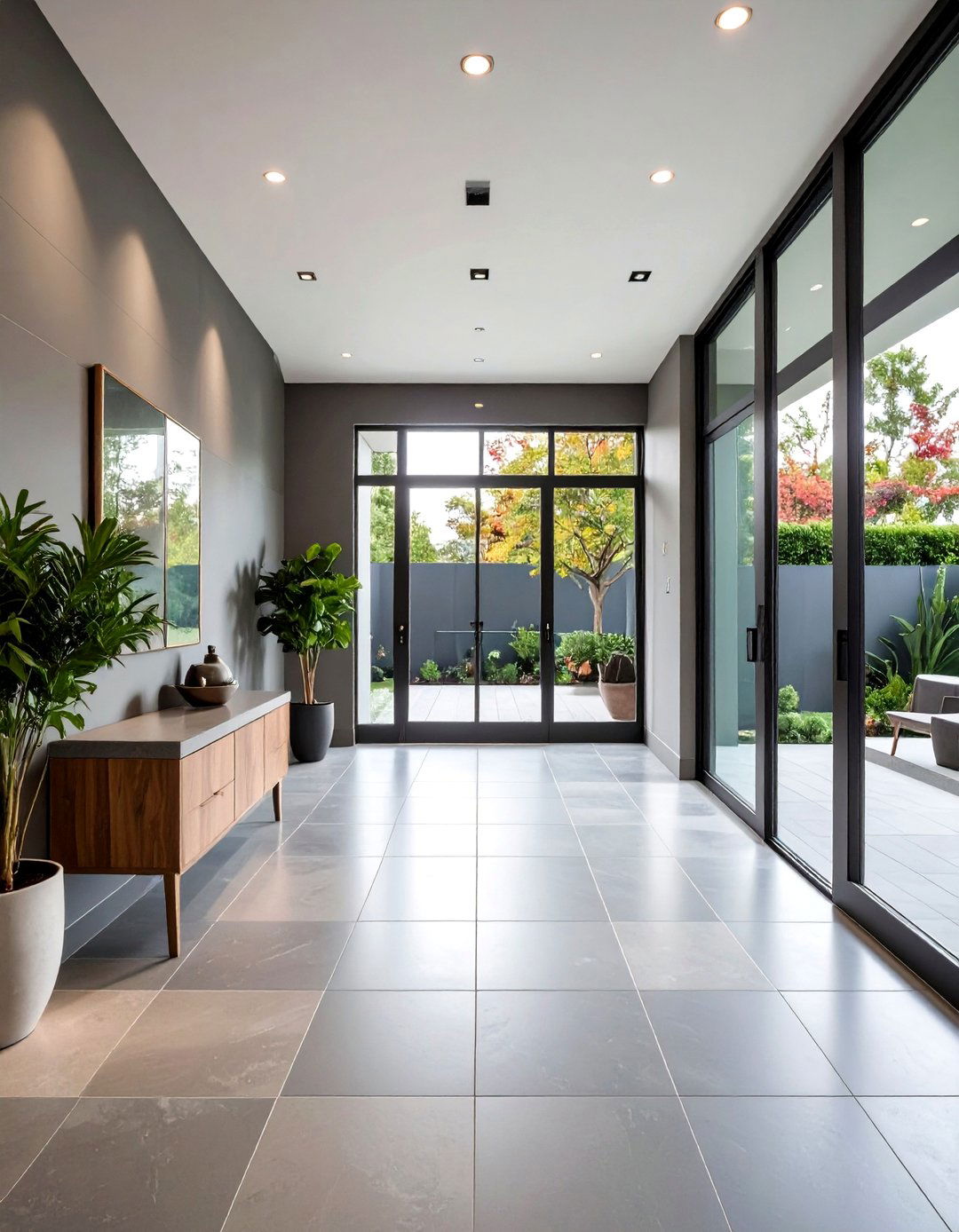
Oversized tiles in muted hues reduce grout line visibility, creating a seamless, “open” feel in small entryways. Rectangular formats (e.g., 12×24 inches) laid in a stacked or brick pattern simplify the floor plane, highlighting the room’s negative space. Opt for low-sheen porcelain to conceal scratches and smudges. The minimal joint lines help the floor recede visually, making the walls appear to extend uninterrupted.
14. Arabesque Tiles for Organic Flow
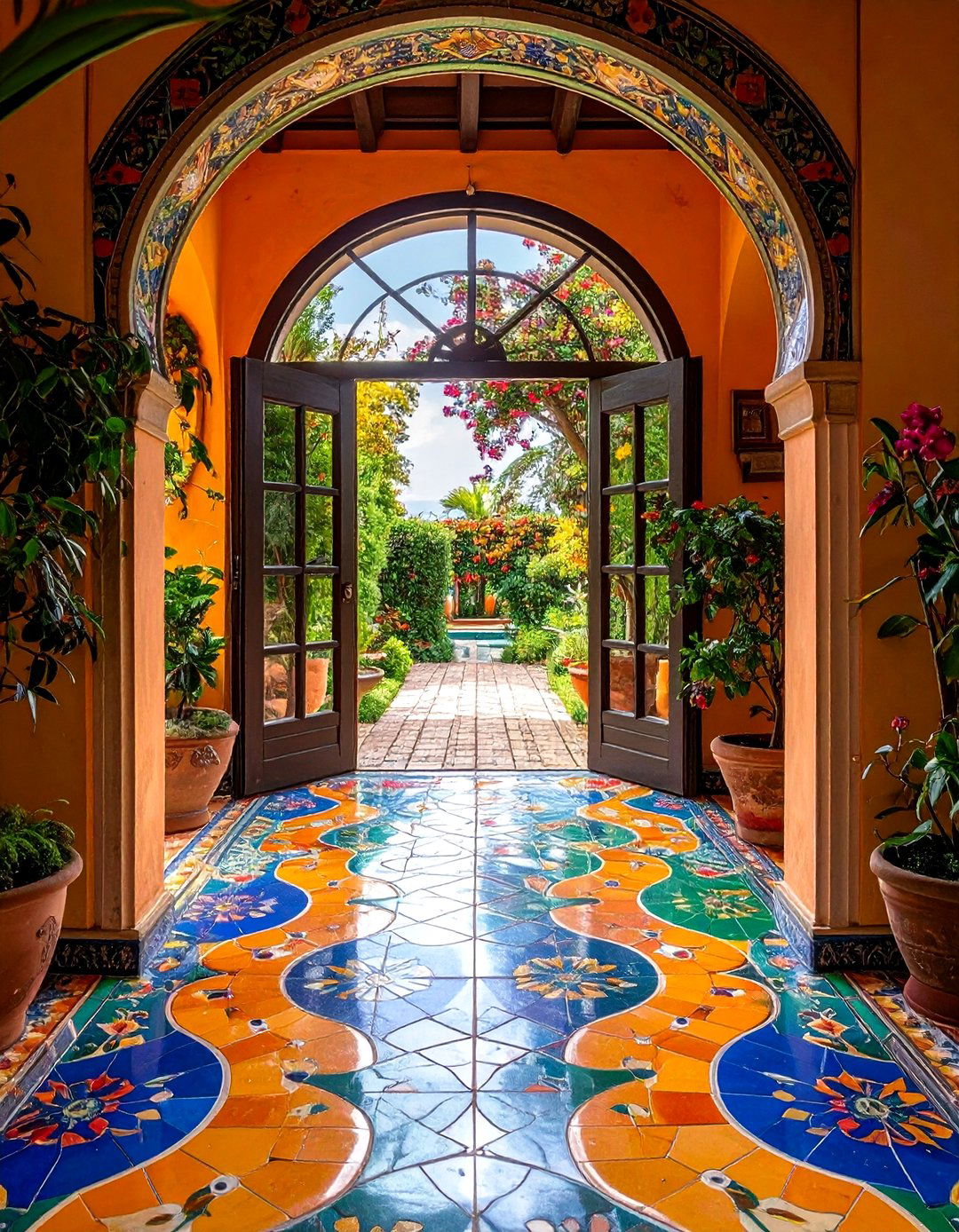
Arabesque, or ogee-shaped tiles, form flowing, interlaced patterns that soften corners and balance angular entryways. Commonly used on walls, these shapes also translate beautifully to floors in monochrome or subtle two-tone palettes. Glazed porcelain arabesques add a glossy, uplifting sheen, while mattes bring understated elegance. Lay these tiles in a tight, continuous field to evoke movement and visual intrigue in a compact foyer.
15. Scallop Shell-Shaped Tiles

Scallop or fish-scale tiles introduce a playful, whimsical nod to coastal style. Their curved edges create a sense of rhythm as light dances across the surface. Opt for pale pastels or soft grays to avoid overwhelming small spaces, and choose slip-resistant porcelain for durability. A single accent row along a runner or border highlights the unique shape without crowding the design.
16. Intricate Glass Mosaic Accents
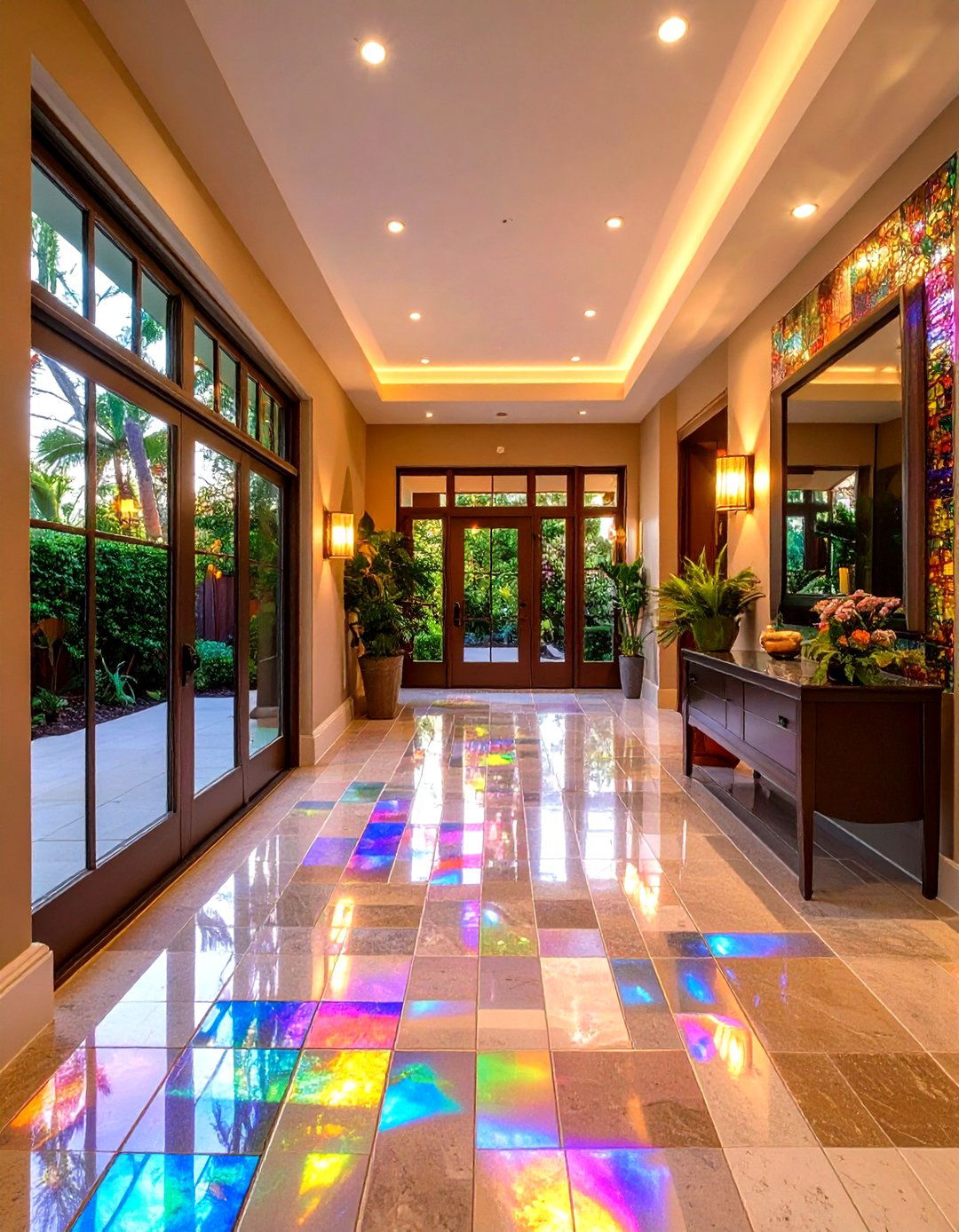
Glass mosaic tile remnants—whether in iridescent subway shapes or mixed-color penny rounds—add reflective sparkle that amplifies natural and artificial light. Use glass mosaics sparingly as inset medallions or narrow borders to draw attention to key areas without shrinking the floor visually. Their smooth, nonporous surface cleans easily, and varied hues can tie together accent colors from textiles or wall paint.
17. Picket Tile Runners
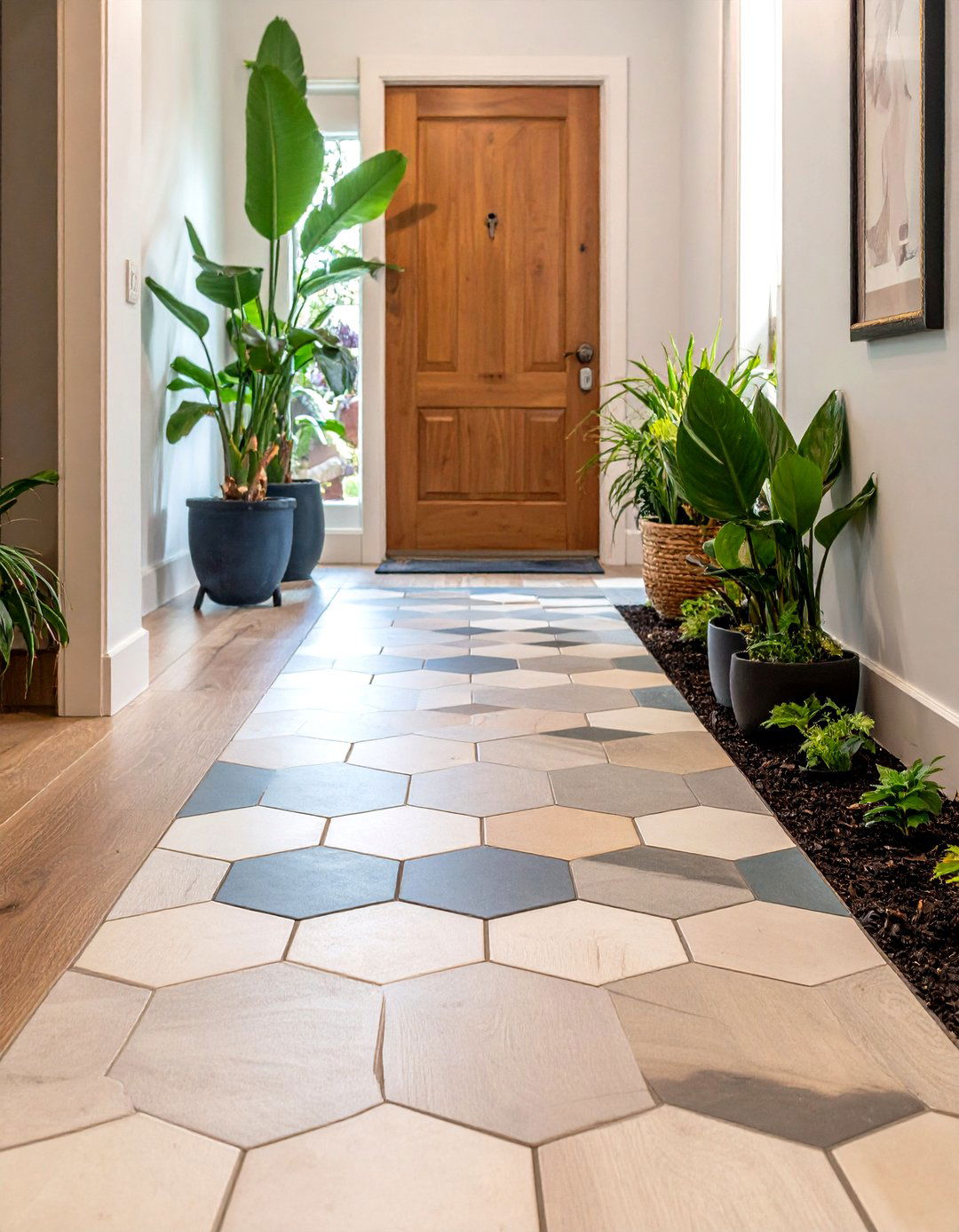
Elongated hexagon “picket” tiles laid parallel to the walls form runner-like strips that guide foot traffic and create subtle visual corridors. Neutral tones and minimal grout lines maintain a clean look, while slight color shifts in alternating strips produce gentle contrast. Ideal for framing an interior rug or bench area, these tiles combine practicality with an understated geometric appeal.
18. Octagon and Dot Patterns
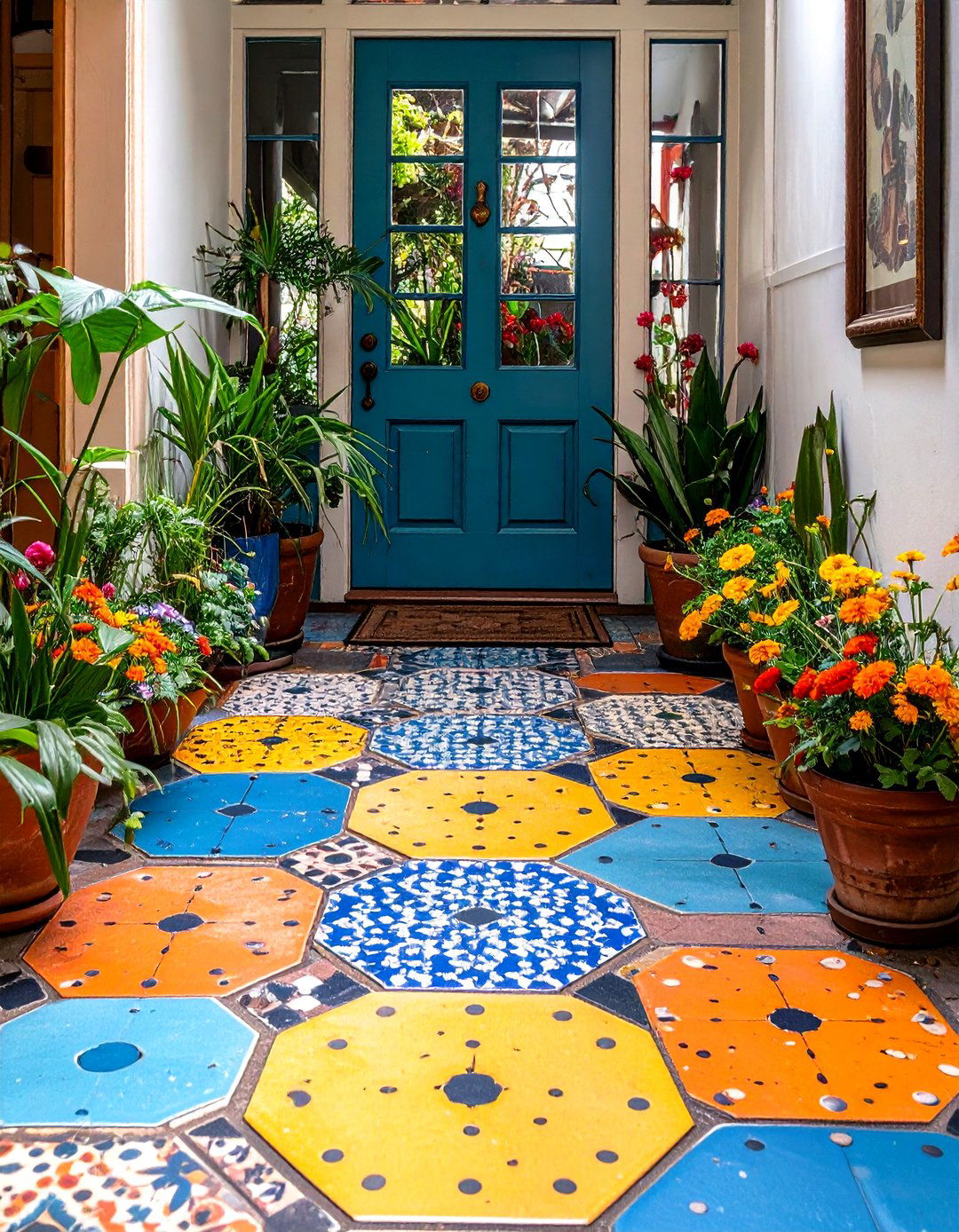
Octagon floor tiles paired with smaller square or dot insets evoke a vintage Victorian aesthetic that complements both historic and modern interiors. The repeating eight-sided forms lend symmetry, while the contrasting “dot” pieces add pinpoint accents. Opt for ceramic in muted tones like dove gray and alabaster for a refined, age-defying look that conceals imperfections.
19. Transitional Multicolored Hexagon
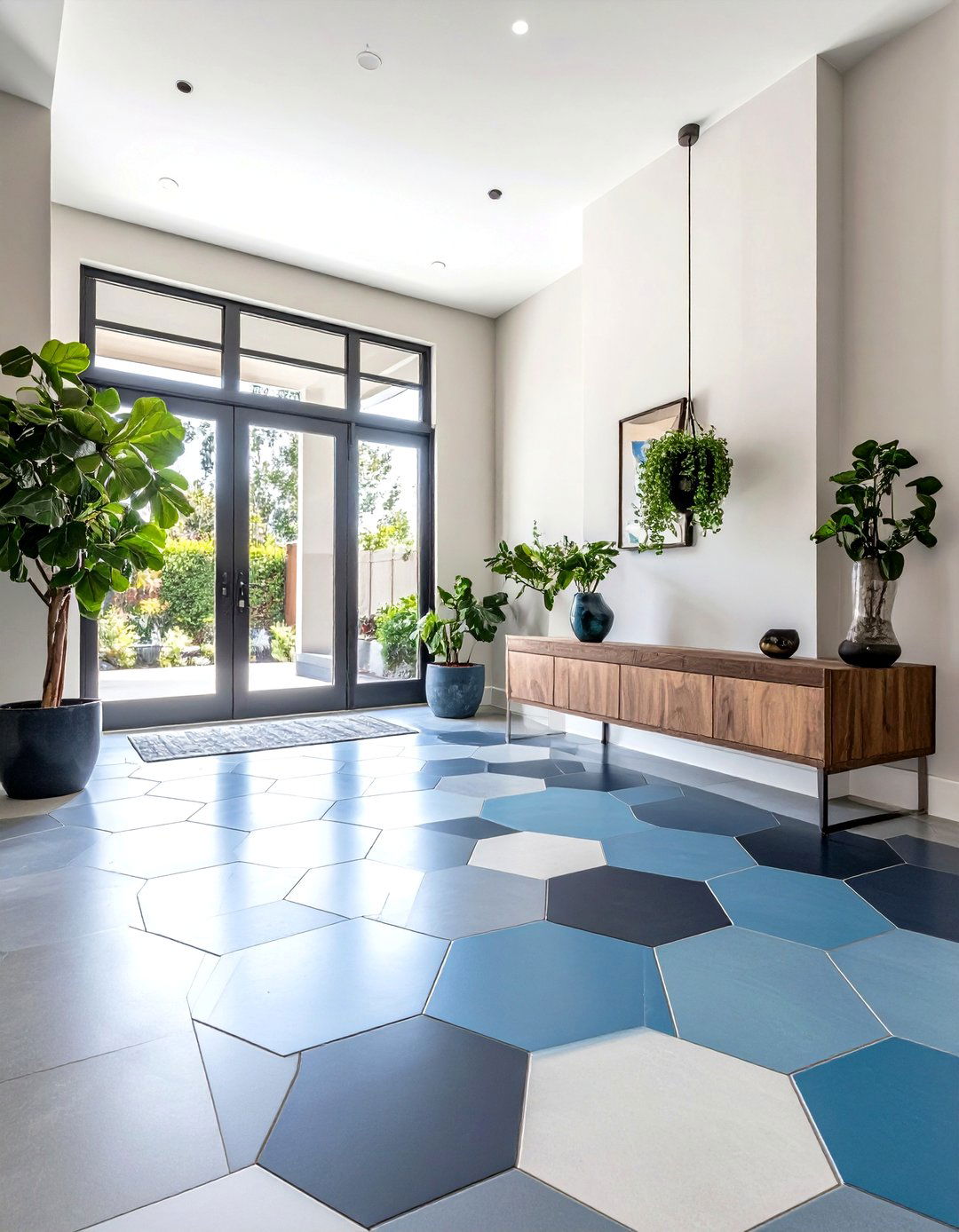
Combining two or three hexagon hues—such as light gray, charcoal, and soft blue—in a random or gradient layout produces a transitional style perfect for contemporary entryways. The multicolored scheme breaks up the floor plane, making scuffs and dirt less noticeable, while the geometric shapes reinforce a modern aesthetic.
20. Mosaic Accent Borders
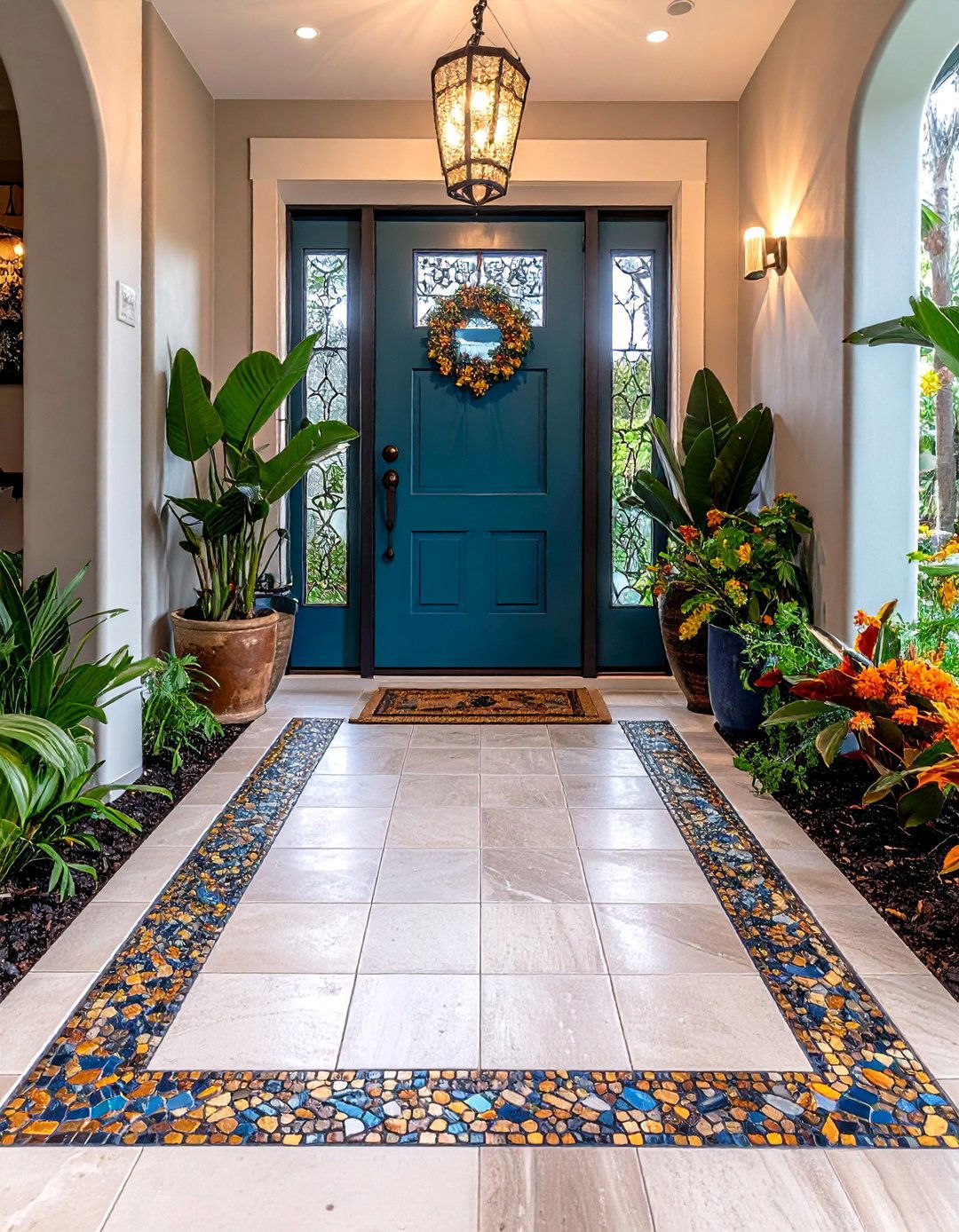
Frame your chosen floor tile—whether subway, wood-look, or large-format—with a narrow mosaic border in contrasting colors or metallic tones. This tailored outline visually contains the field, delineating the entry zone and adding a polished, custom-crafted feel. Small glass or porcelain mosaic strips create shimmer and textural contrast, ensuring guests’ eyes are drawn to the thoughtful detail.
Conclusion:
Selecting the ideal tile for a small entryway hinges on balancing practical considerations—durability, slip resistance, and ease of cleaning—with design-driven goals like depth, pattern, and visual flow. Whether you favor the warmth of wood-look porcelain, the graphic impact of black-and-white mosaics, or the artisanal charm of Moroccan cement designs, each tile style presents unique benefits. Geometric layouts such as hexagons, herringbone, and checkerboard can optically enlarge compact spaces, while large-format or minimal-joint tiles foster an open ambiance. Accented borders, mixed shapes, and glossy versus matte finishes allow for personalized touches that resonate with your home’s character. By thoughtfully pairing tile materials, colors, and patterns, even the smallest foyer can leave a lasting, stylish impression.


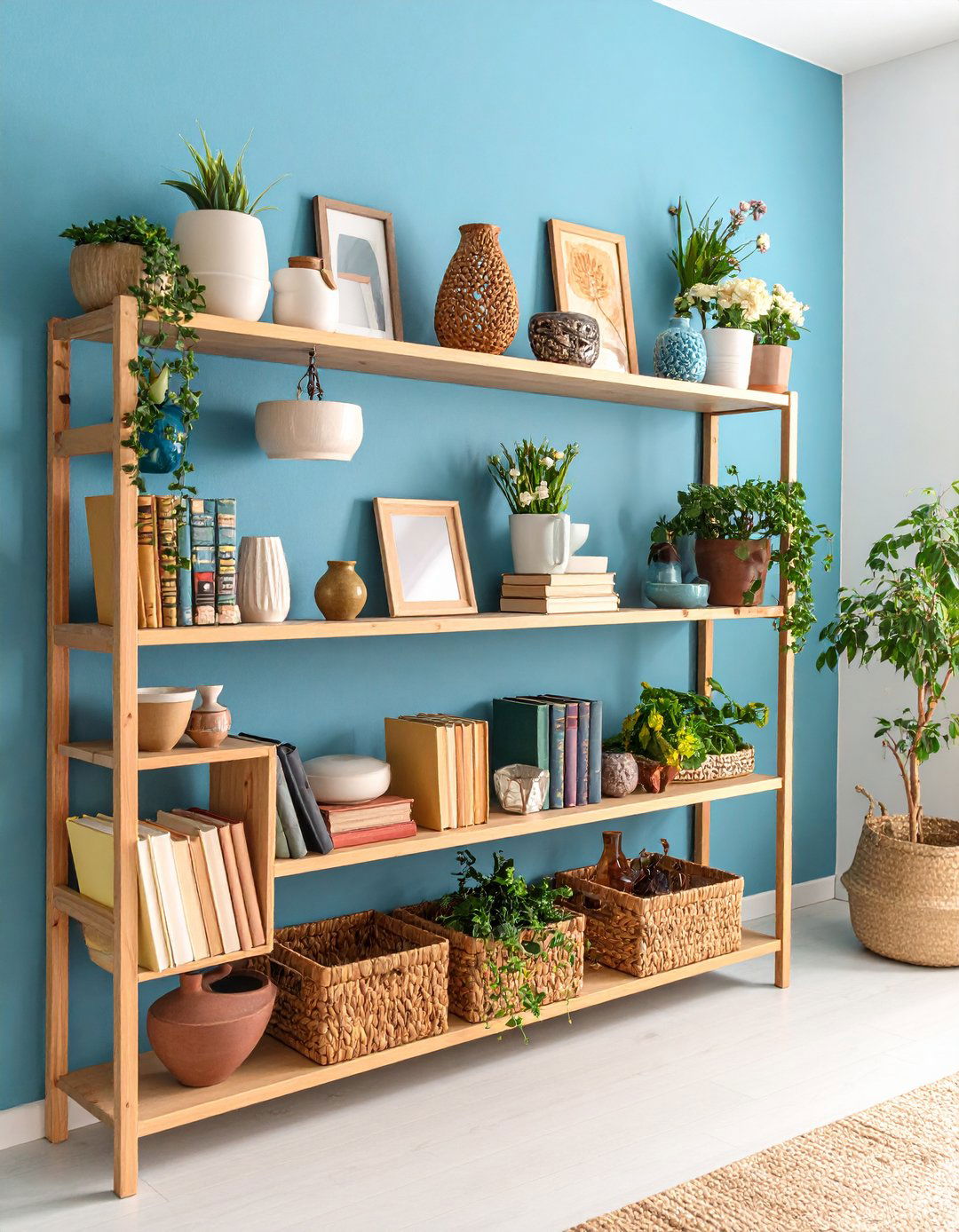
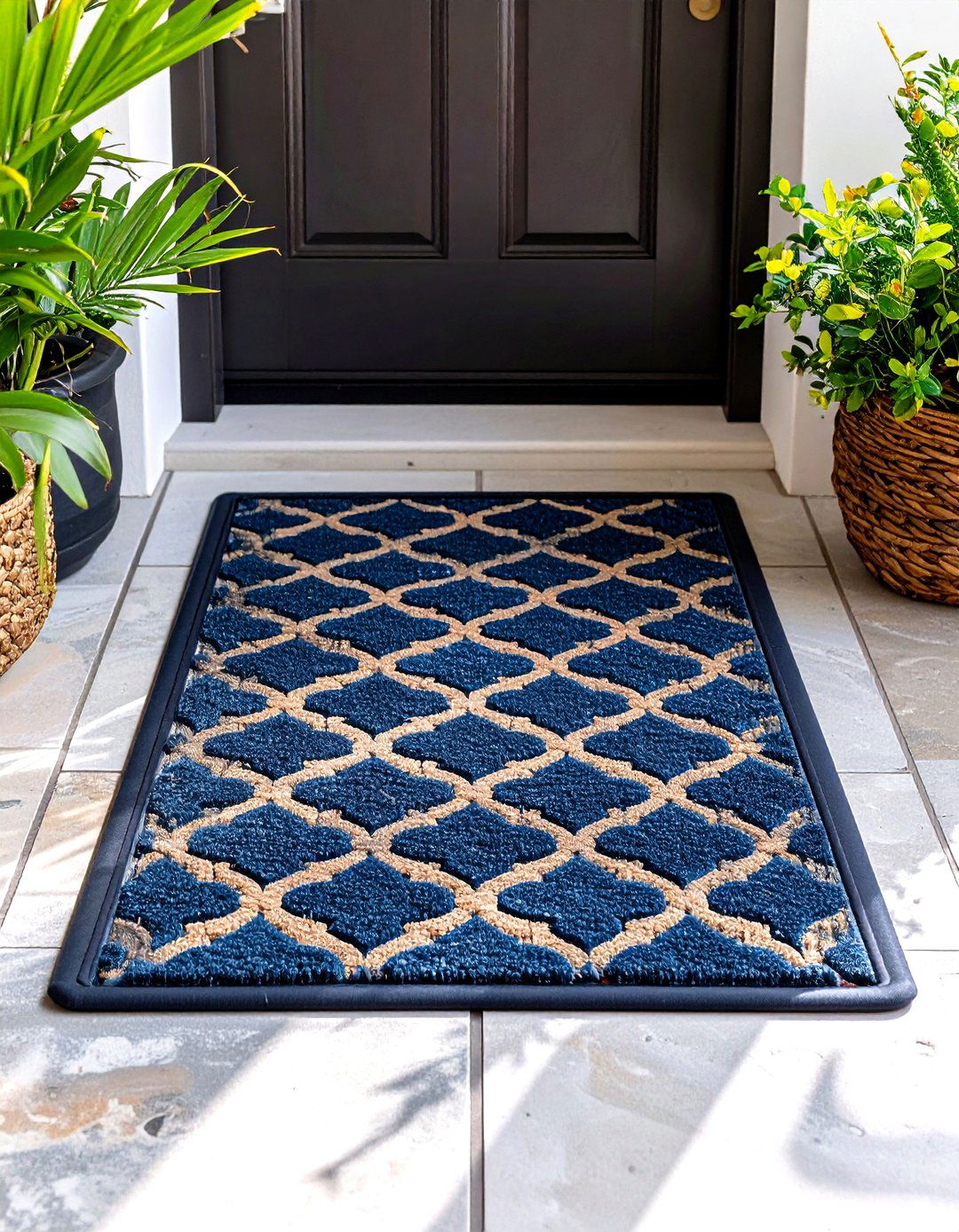
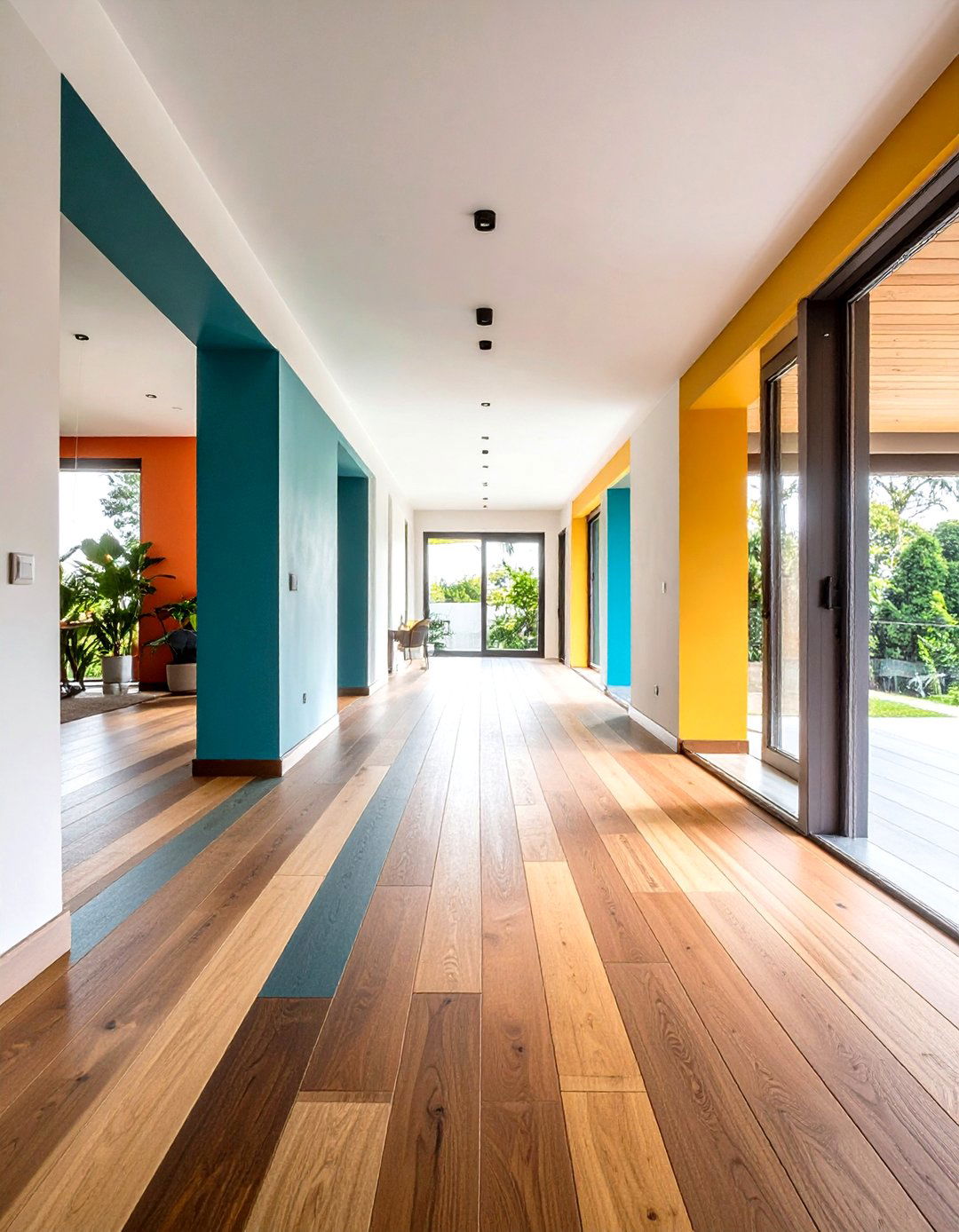
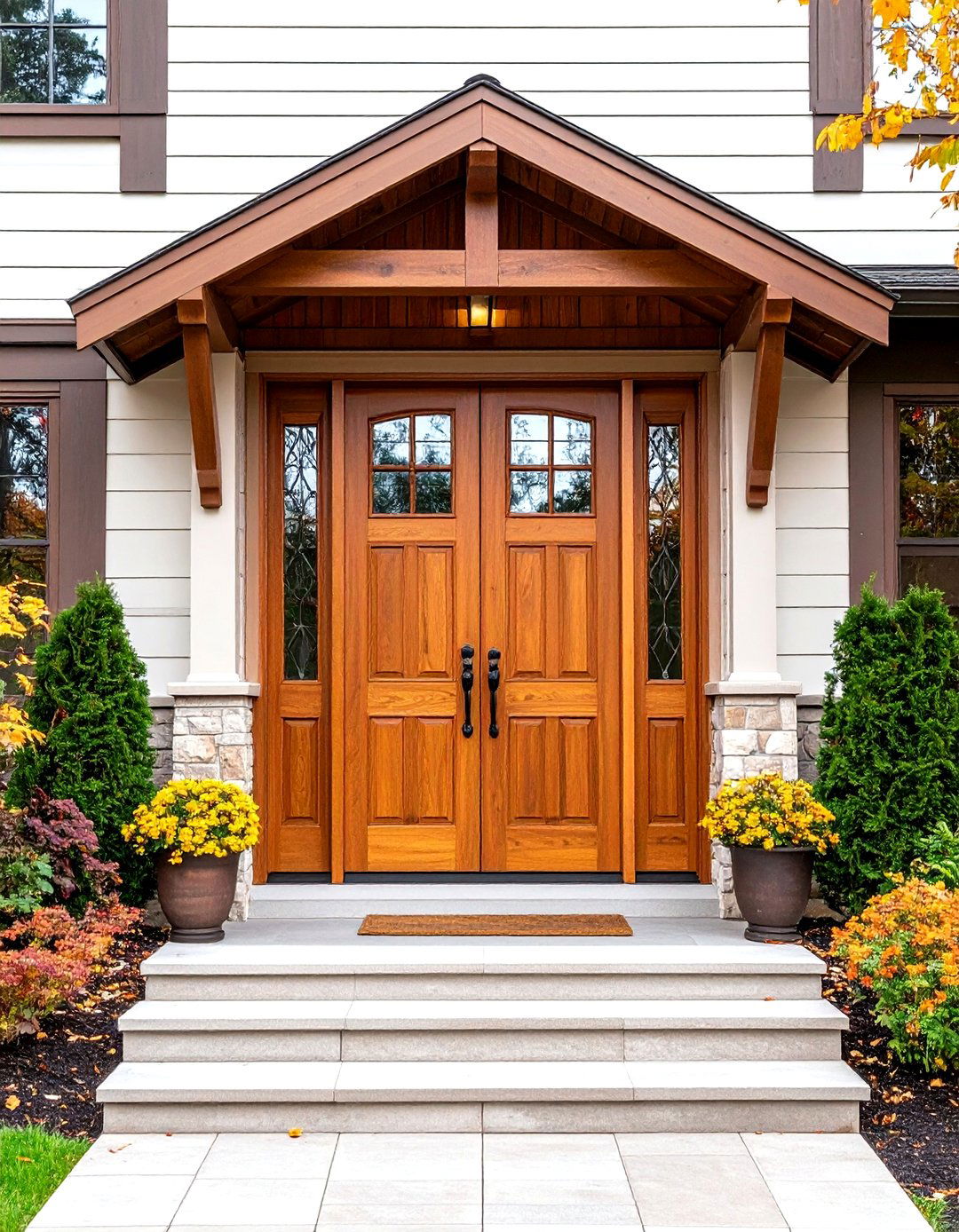
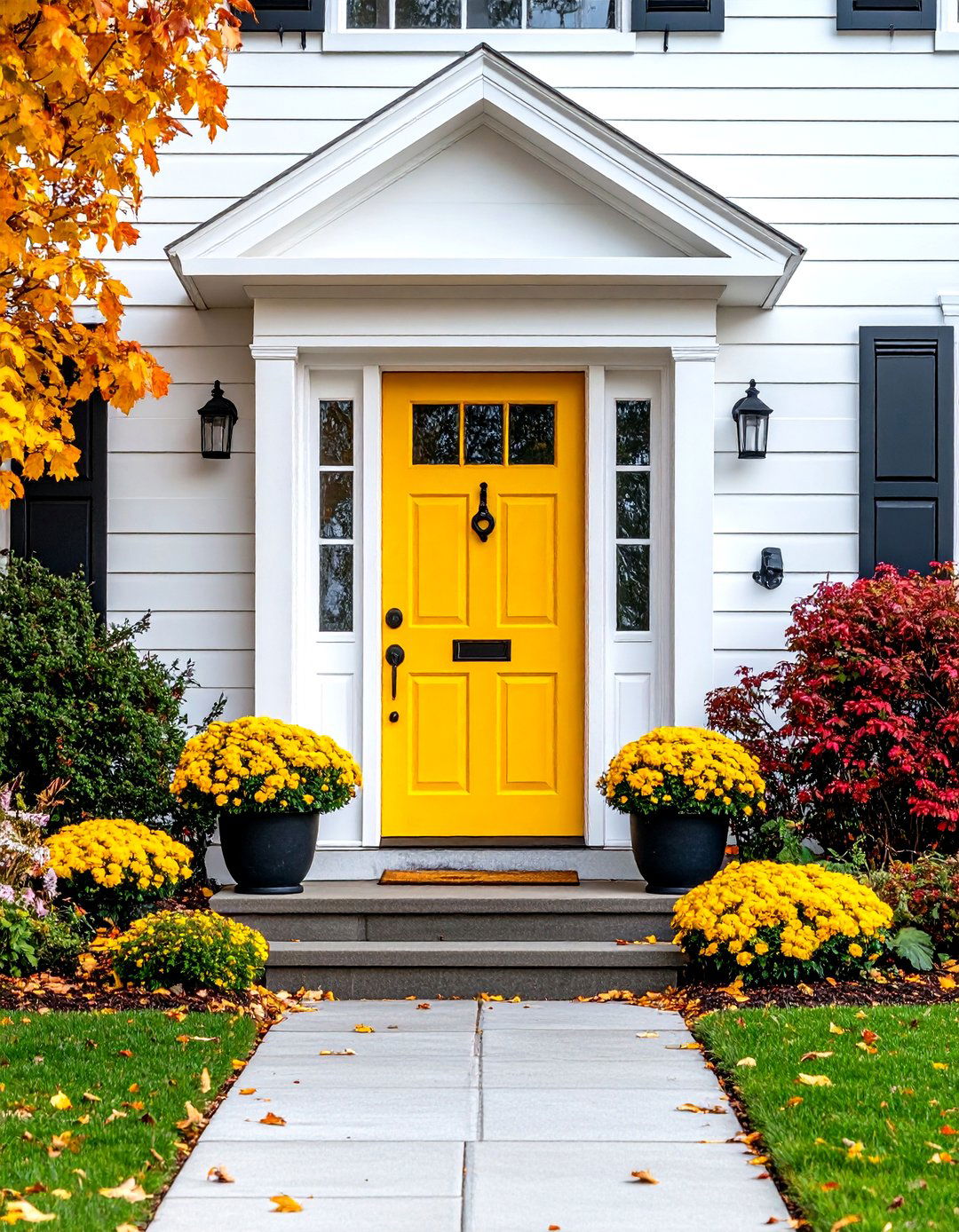
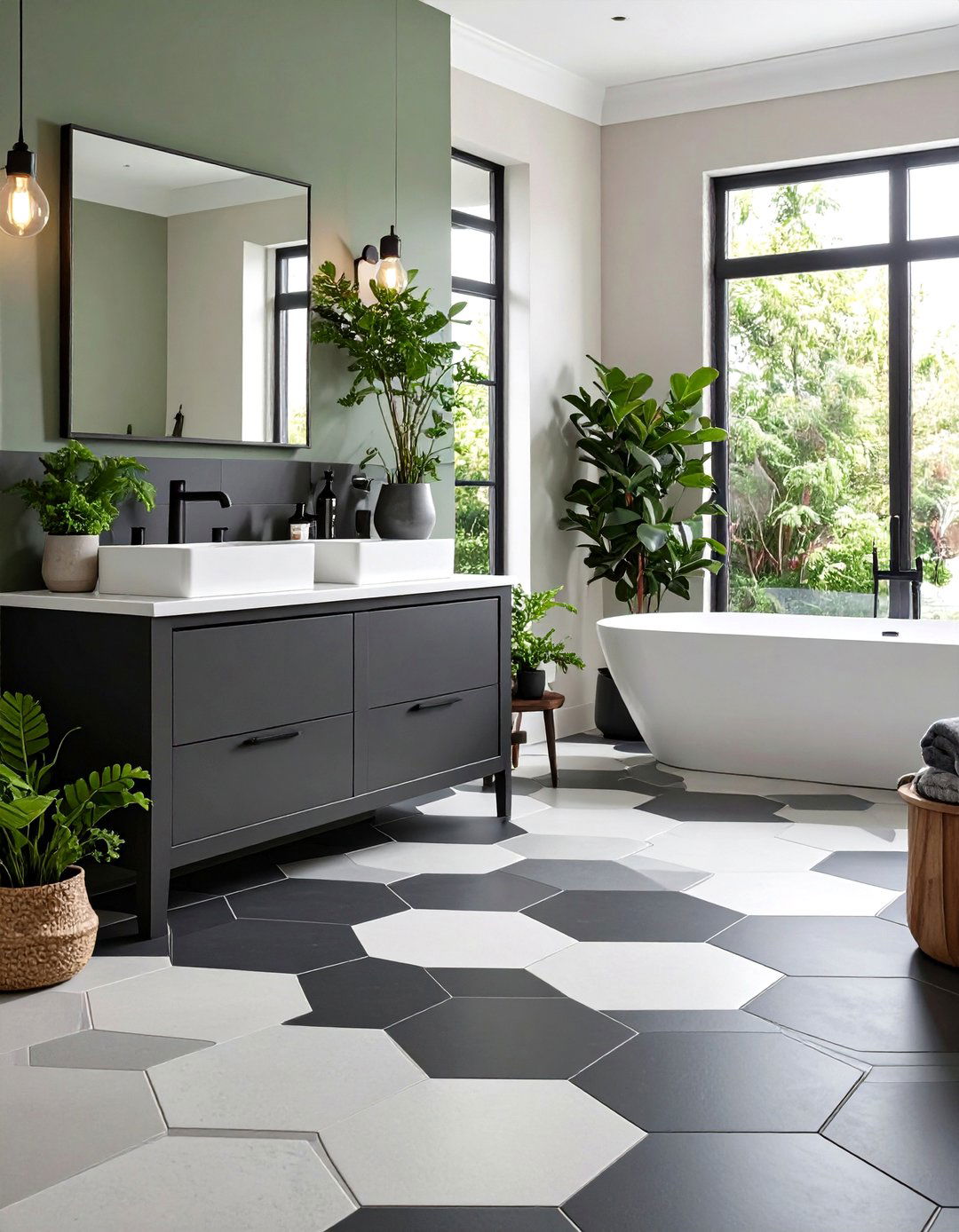
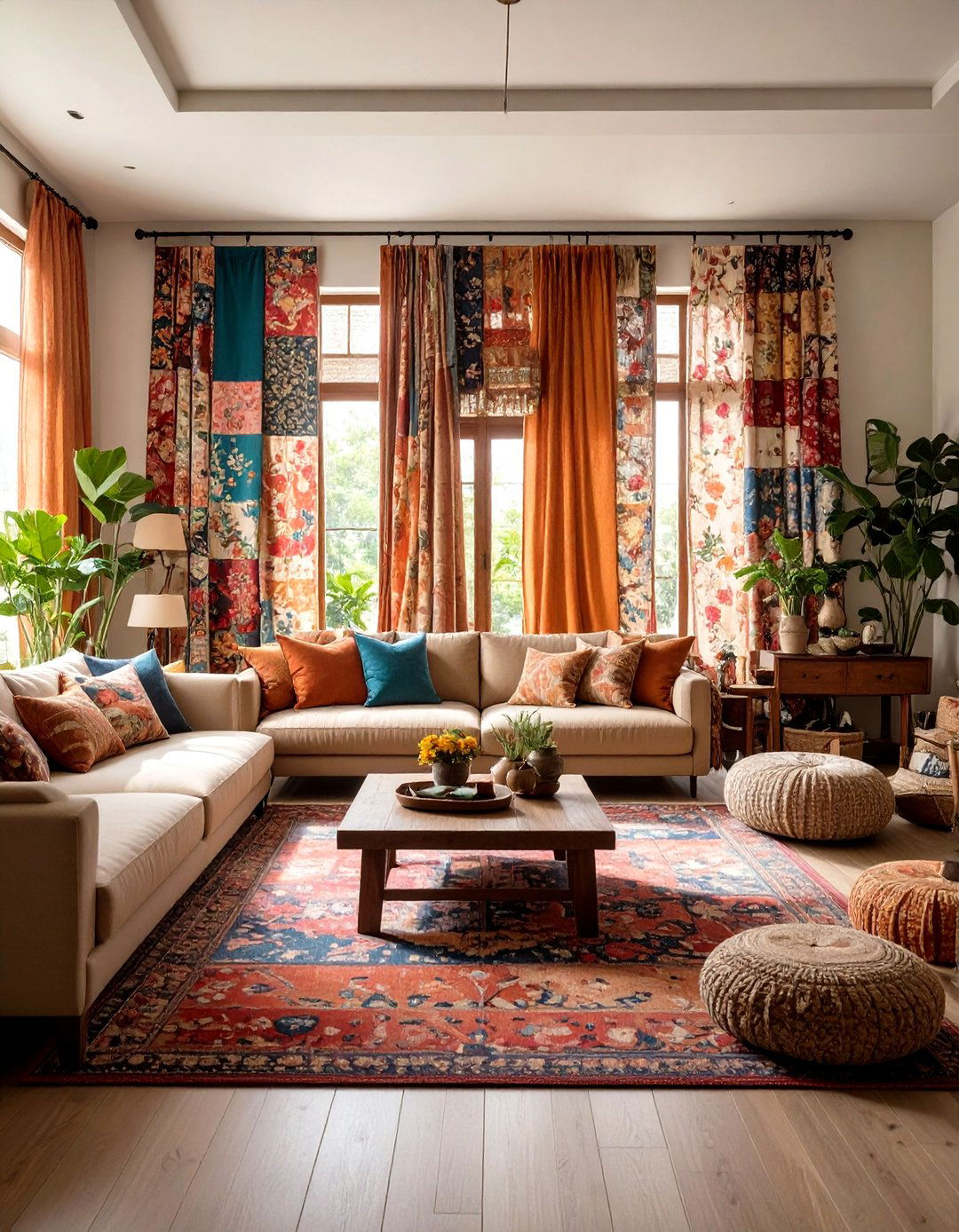

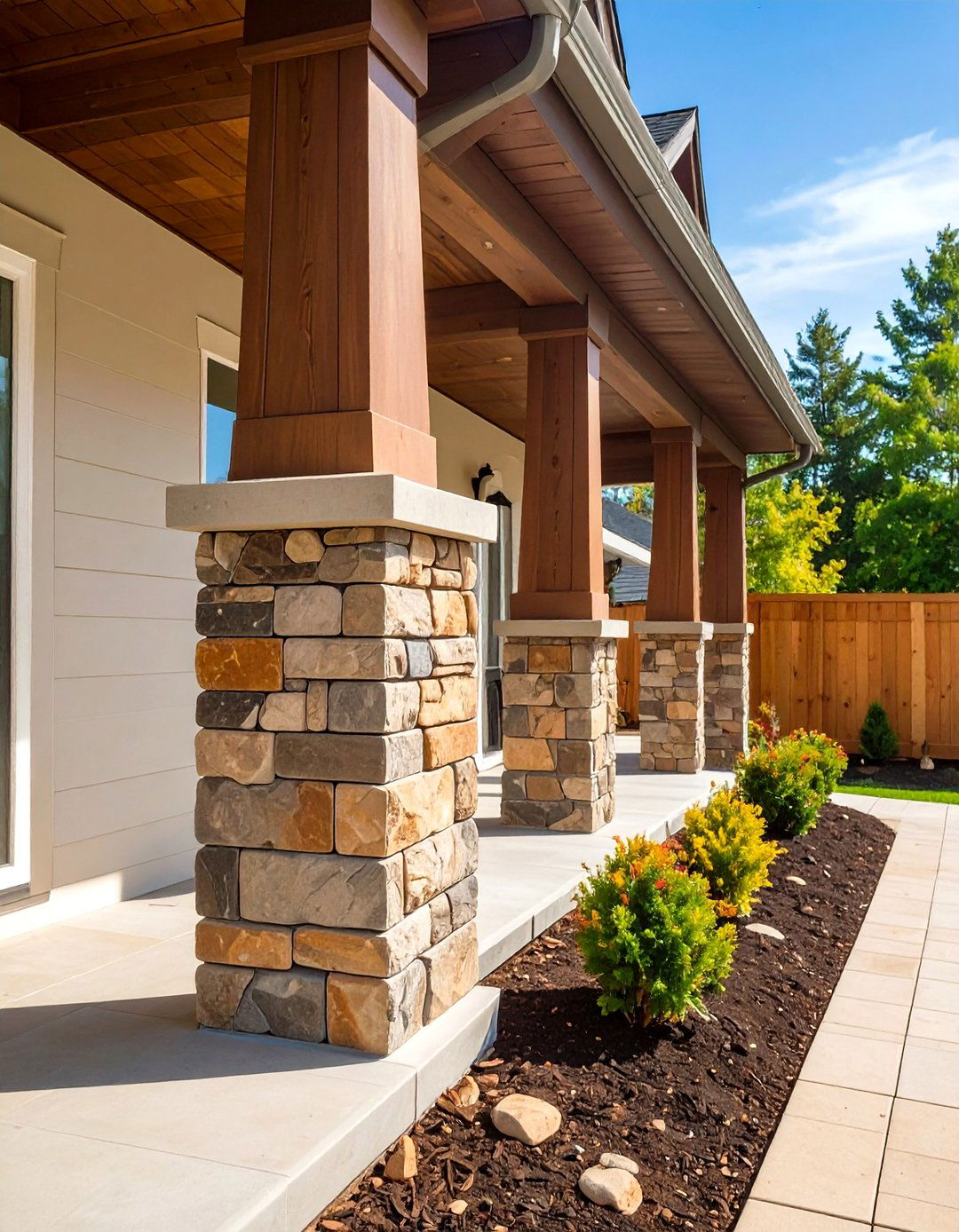
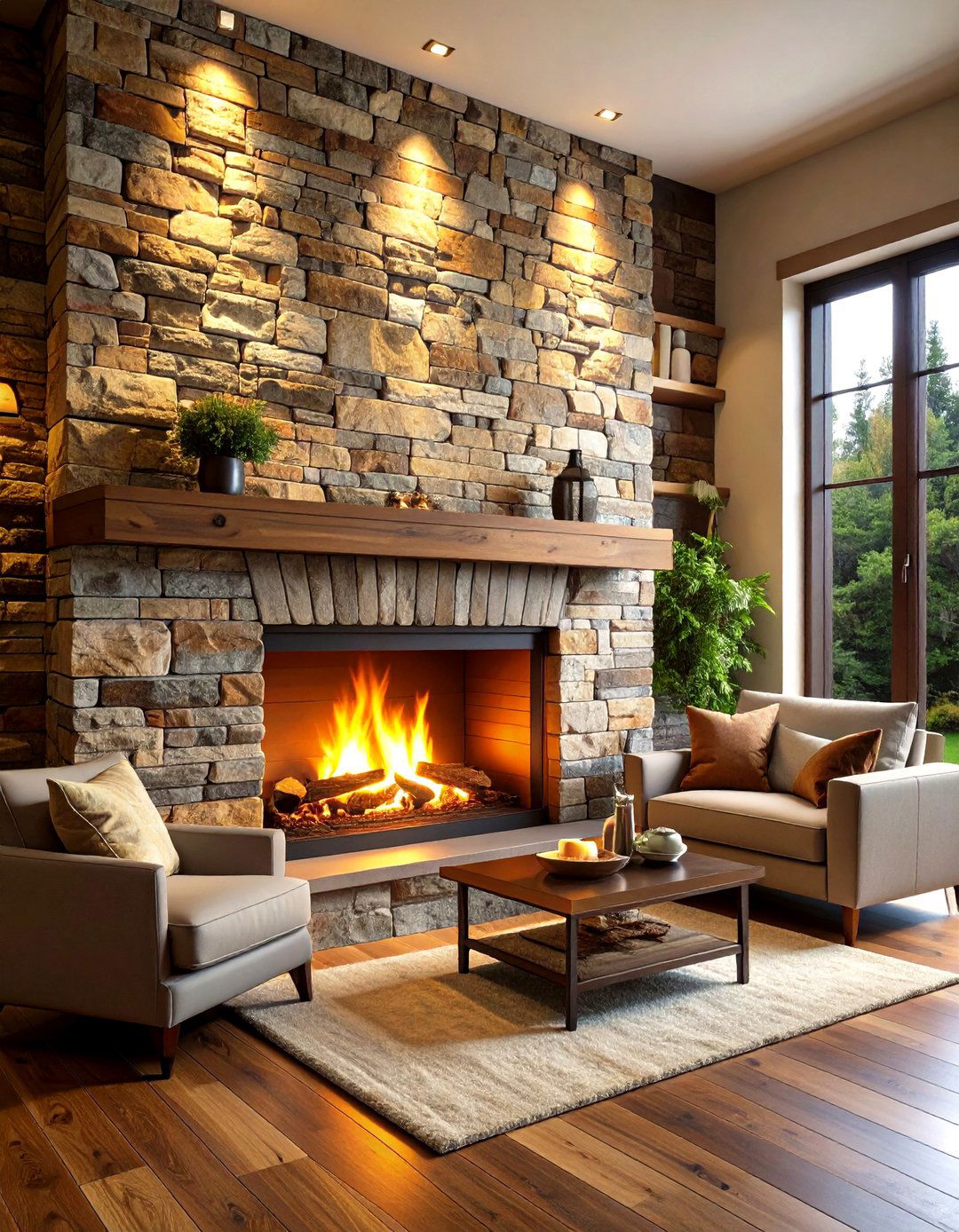
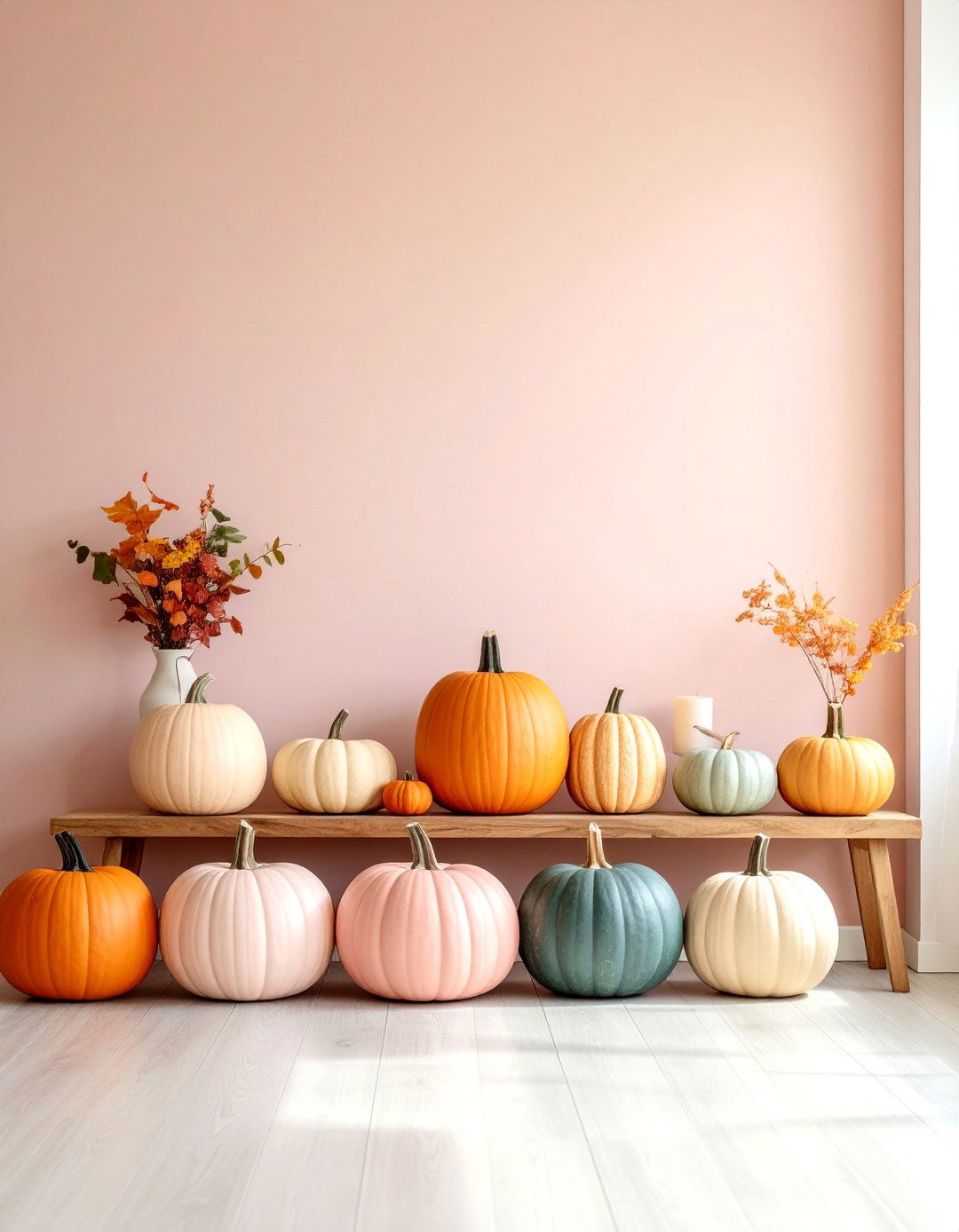
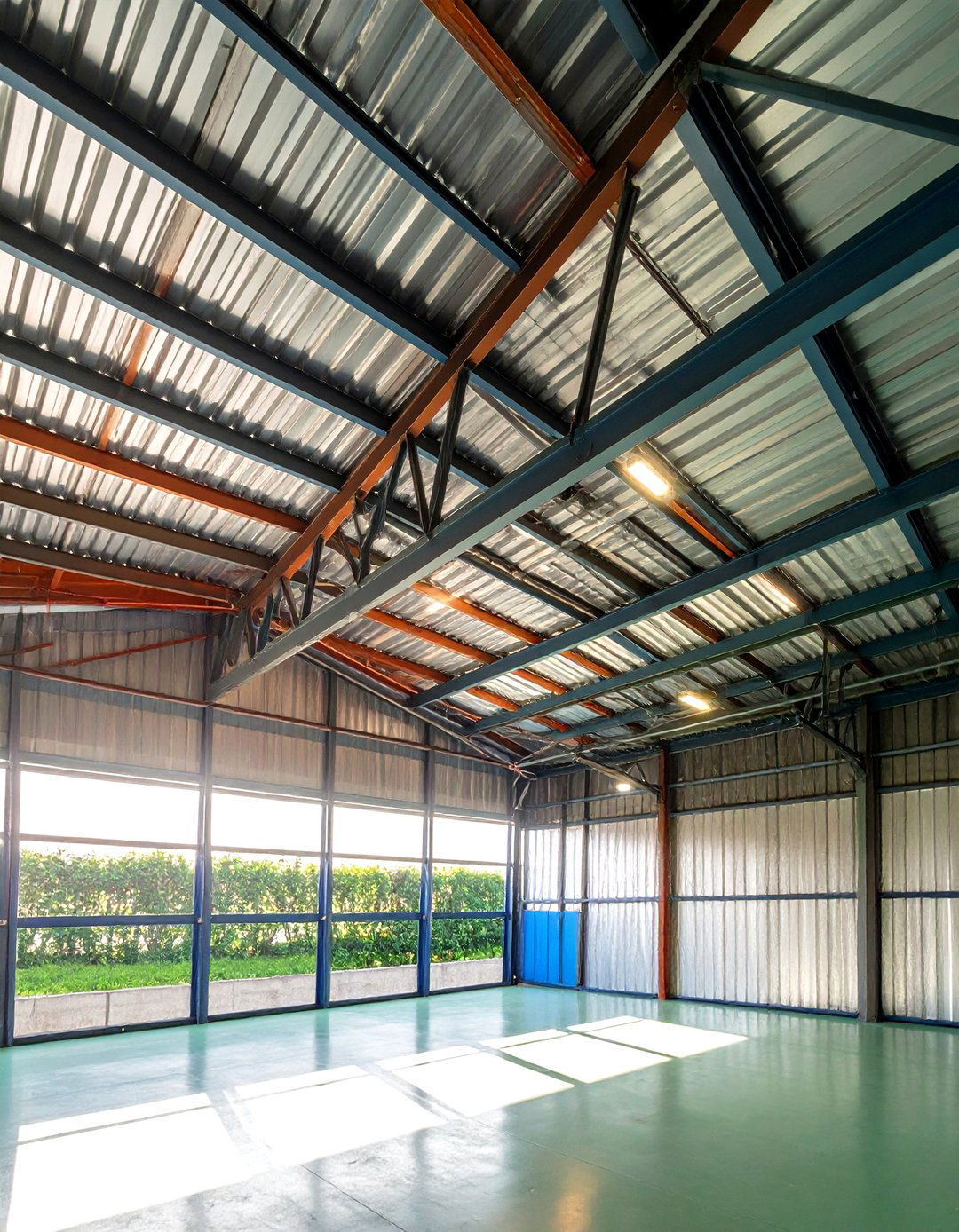
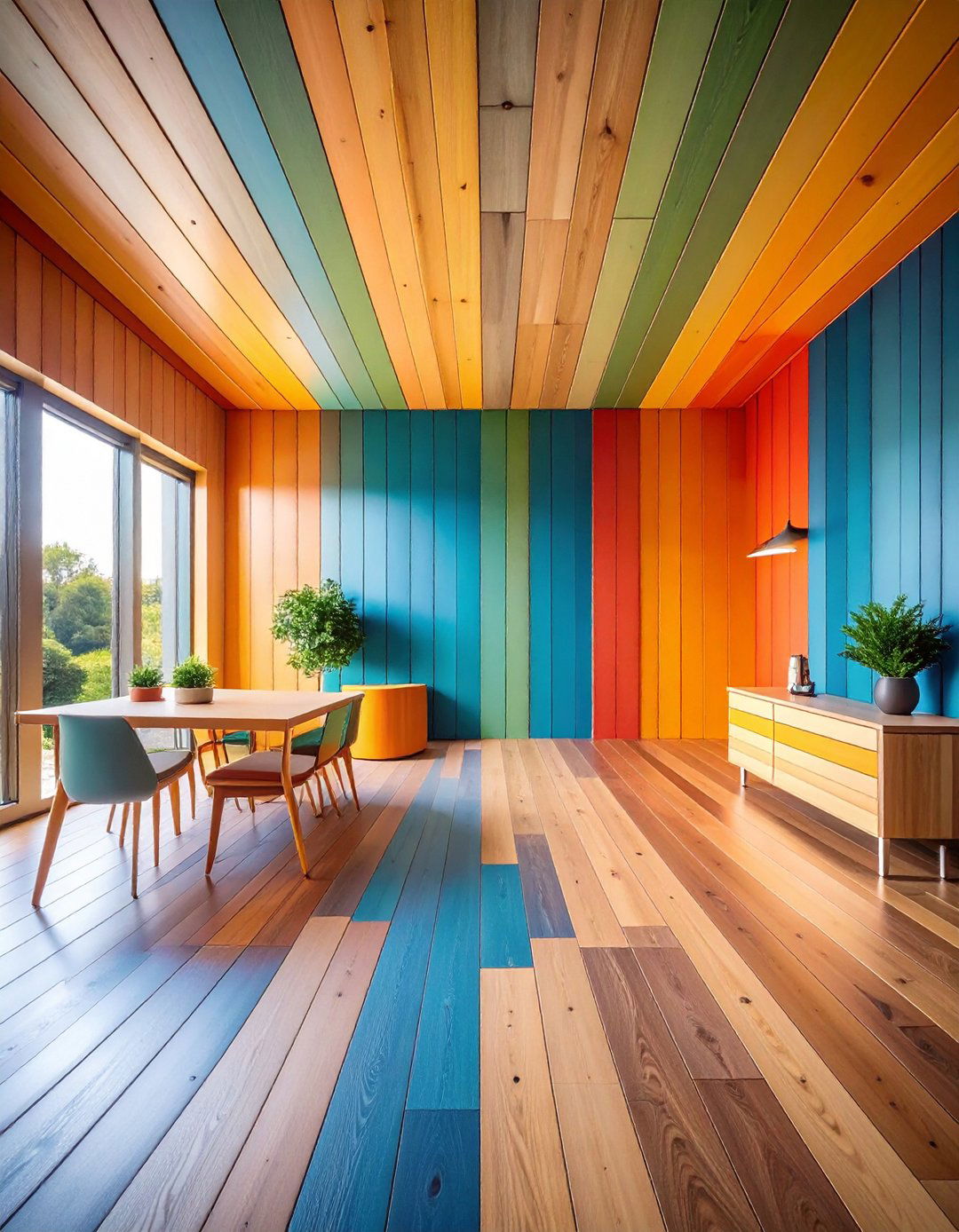
Leave a Reply